




























With Wenger, you make products that pets love to eat.
Through careful testing and extensive research, our world-class team helps you develop premium foods and treats, and the processes to produce them at scale. Pet food producers globally trust Wenger for extrusion cooking and drying solutions to satisfy healthy pets everywhere.
See what Wenger can do for your business.
Wenger.com
Tel: +55 19 3881 5060
E-mail: wengerbr@wenger.com
All Pet Food
Alvear 44, Chacabuco
Provincia Buenos Aires–Argentina info@allpetfood.net
Editorial Team
Josefina Poy
Victorina Manes
Maria Candelaria Carbajo
Delfina Rojas
Laureano Cane
Ludmila Barbi Trindade
Erika Stasieniuk
Candela Bonaura
Armando Enriquez de la Fuente Blanquet
Juan Manuel Peralta
Luis Miguel Gómez Osorio
Josiane Volpato
Juan Gómez-Basauri
Iván Franco
CEO
Pablo Porcel de Peralta
pablo.porcel@allpetfood.net
Sales Manager
Iván Marquetti ivan.marquetti@allpetfood.net
Sales Representative - North and Central América
Diana Mercado
diana.mercado@allpetfood.net
Marketing & Customer Intelligence
Julia Cruz Díaz julia.cruzdiaz@allpetfood.net
Marketing Assistant María Duffau
maria.duffau@allpetfood.net
Editorial Leader / Community Manager
Josefina Poy josefina.poy@allpetfood.net
Admin. Leader / Product Owner Magazine
Victorina Manes
victorina.manes@allpetfood.net
Magazine Editor María Candelaria Carbajo candelaria.carbajo@allpetfood.net
Editorial Translator
Delfina Rojas delfina.rojas@allpetfood.net
Event Leader
Micaela Poltrone micaela.poltrone@allpetfood.net
Brand Estrategist – UX UI Laureano Cane laureano.cane@allpetfood.net
Multimedia Design
Juliana Di Palma
juliana.dipalma@allpetfood.net
Junior Designer
Martina Venece martina.venece@allpetfood.net
Development Leader
Matías Schettino
Our community Web: www.allpetfood.net
Linkedin: bit.ly/3xOBkEt Youtube: bit.ly/3izL0Hn Instagram: bit.ly/3lUV6Z7




Driving knowledge, collaboration, and the positioning of a global industry.







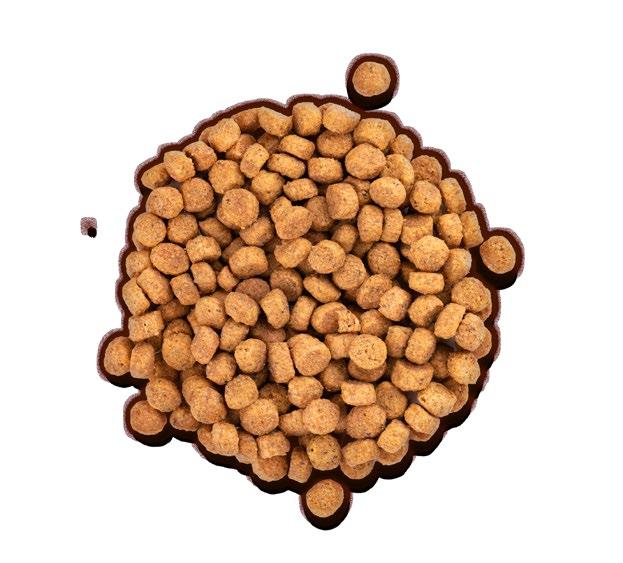
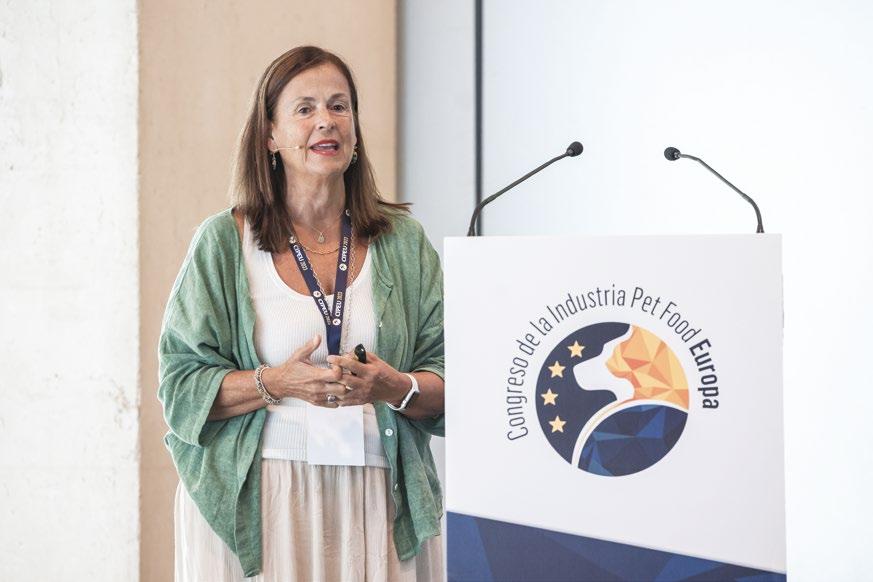
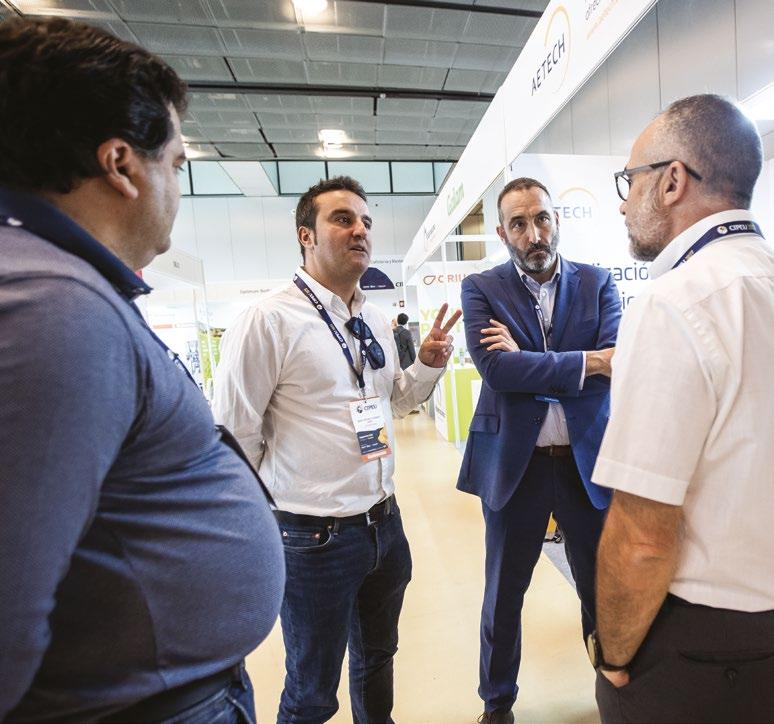
which improves absorption and bioavailability in the companion animal digestive systems.
Incorporating these micro-ingredients is more sustainable and offers nutritional benefits, for example a better balance in pet diets.
2. Recycling Technologies for Ingredients
In the plastic era, in which recycling and reusing are essential, pet food companies are experimenting with recycled ingredients and technologies that allow the recovery and reusing of human feed by-products. This reduces the need to remove new resources and minimize waste.
Agriculture by-products: Some pet food ingredients come from the agricultural by-products industry, such as fruit and vegetable peels, which are rich in fibers and antioxidants.
Pet food packaging plays a vital role in preserving food, especially micro-ingredients. Usually, it implies the use of non-biodegradable plastics. However, the industry is evolving in terms of research and development of sustainable packaging.
Biodegradable or compostable plastics: Many manufacturers choose environmentally friendly packaging, i.e., those made of compostable or biodegradable materials, such as corn starch and bioplastics obtained from plants.
Plastic reduction in packaging: A growing trend is to reduce plastics in packaging by using recycled packaging or facilitating its recycling.
4. Transparency in the Supply Chain
As the demand for sustainable products grows, so too the need for transparency in the supply chain.
Consumers seek brands that offer clear information about the origin and manufacturing of ingredients.
Environmental certification and ingredient traceability are increasingly more common, allowing consumers to make informed decisions about their pet products. This is not only about ingredients but also the environmental impact of manufacturing and packaging.
Using sustainable micro-ingredients can also benefit pet and human health. Ingredients rich in vitamins, trace minerals, antioxidants, healthy fats, and essential nutrients can enhance their quality of life while reducing the ecological impact.
As advancements in food science and biotechnology continue, micro-ingredients from alternative biological sources can be at the vanguard of industry change. It also means regulatory challenges regarding security, labeling, and approval of new ingredients in the international market.
Using sustainable micro-ingredients in the pet food industry is an excellent way to reduce the environmental impact, especially in a world full of plastic and ecological concerns. Companies are incorporating technological innovations and more responsible ingredients to offer more nutritious and environmentally friendly products. However, this change requires a continuous commitment to research, development, and transparency in each stage of the manufacturing process.
This approach addresses consumers’ growing demand for sustainable products. It is also an opportunity for pet food brands to play an important role in the global environmental struggle.
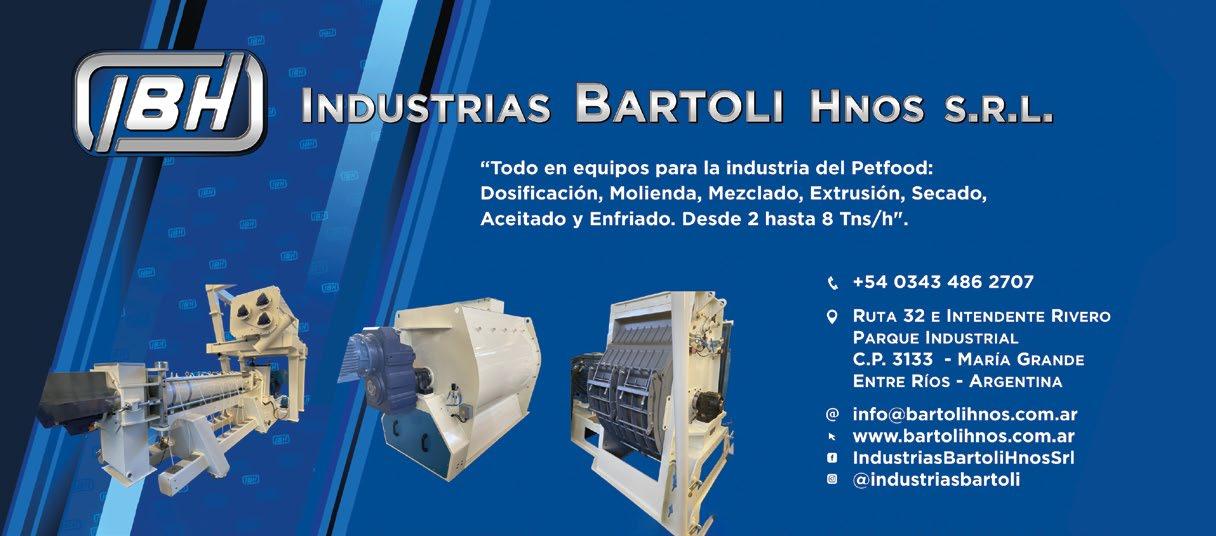
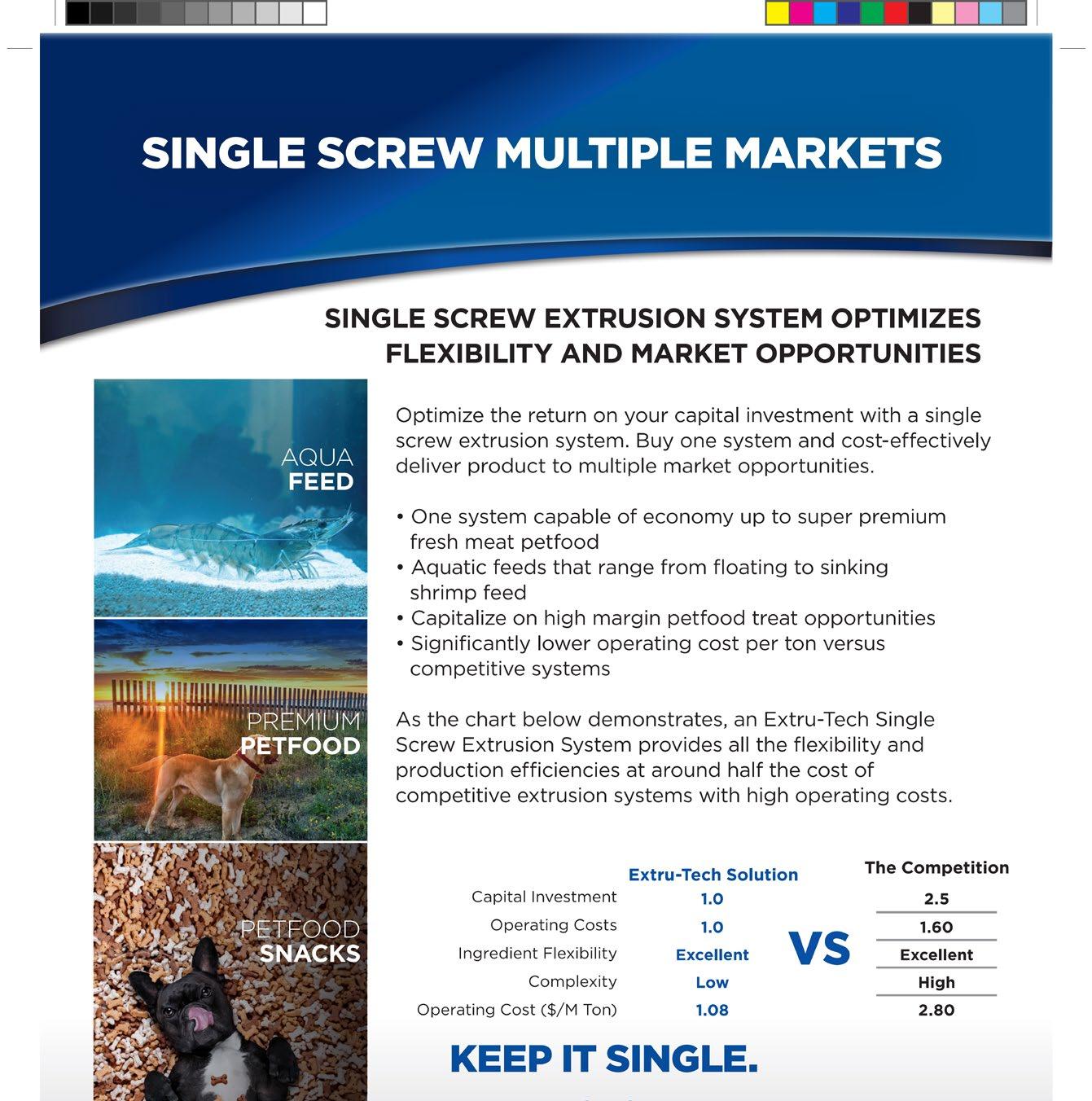


Sustainability, at its core, focuses on reducing waste, minimizing carbon footprints, and conserving natural resources while promoting economic growth and social equity. Businesses and governments play a crucial role by implementing innovations and policies that support sustainability, such as reducing emissions, improving supply chains, and adopting eco-friendly materials.
By Juan Gómez-Basauri, Ph.D. - Magellan LLC
The shift toward sustainability is essential for addressing climate change, preserving biodiversity, and ensuring longterm prosperity for people, pets, and the planet. At the individual and/or consumer level, almost everyone will agree that sustainability means making conscious choices e.g. reducing plastic use, conserving water, supporting ethical brands, and prioritizing energy efficiency.
Plastic has become an integral part of modern life. Its durability, versatility, and cost-effectiveness have made it the packaging material of choice. However, growing concerns about environmental sustainability and plastic pollution lead us to ask if plastic should continue to be the material of choice. As of 2015, approximately 6,300 MT of plastic waste had been generated, around 9% of which was recycled, 12% was incinerated, and 79% was accumulated in landfills. If current production and waste management trends continue, roughly 12,000 MT of plastic waste will be in landfills or the natural environment by 2050 (Geyer et al.; 2017). This article briefly examines plastic usage in the
pet food sector, its benefits and challenges, and potential sustainable solutions.
Plastics are synthetic polymers derived primarily from petrochemicals. Their lightweight nature, moisture resistance, and flexibility make them indispensable in food packaging, including pet food. The widespread use of plastic in food packaging serves various functions, such as preserving product freshness, preventing contamination, and enhancing convenience for consumers.
Plastic packaging in the pet food sector includes multilayered bags, resealable pouches, rigid containers, and flexible films. These materials ensure product stability and extended shelf life and provide a barrier against oxygen and humidity. The pet food industry heavily relies on singleuse plastics, which, despite their functional advantages, contribute to environmental impact.
Extended shelf life: Plastic packaging protects pet food from air, moisture, and light, thereby reducing spoilage and food waste.
Cost-effectiveness: Compared to alternatives such as glass or metal, plastic is lightweight and less expensive to produce and transport.
Convenience: Resealable pouches, tear-resistant bags, and portion-controlled packaging provide convenience to pet owners.
Product safety and quality: Plastic packaging prevents contamination, ensuring that pet food remains safe for consumption.
Branding and marketing: Plastic flexibility allows innovative packaging designs that enhance brand recognition and consumer appeal.
Despite its numerous advantages, plastic usage poses significant environmental and sustainability challenges:
Environmental pollution: A large portion of plastic packaging ends up in landfills and oceans, contributing to pollution and harming wildlife.
Non-biodegradability: Most plastics take from 100 to 1,000 years to decompose, creating long-term waste management issues (as cited by Baberemu et al.; 2022).
Microplastics contamination: The degradation of plastic packaging can lead to microplastics entering the ecosystem, potentially affecting animal and human health (UN Environmental Program, 2021).
Recycling challenges: Pet food packaging often consists of multi-layered materials that are difficult to recycle due to the combination of plastics and other substrates.
Dependence on fossil fuels: The production of plastic relies heavily on non-renewable petroleum resources, contributing to carbon emissions and climate change.
Many plastic pet food bags and containers are designed for single use, leading to an accumulation of waste that is challenging to manage. Although recycling programs exist, the complexity of pet food packaging materials makes recycling inefficient or impossible in many cases.
Biodegradable and compostable packaging: Materials like polylactic acid (PLA), derived from cornstarch or sugarcane, offer a compostable alternative to traditional plastics (Trivedi et al.; 2023). Other bioplastics made from algae, mushroom mycelium, and seaweed provide innovative solutions (Iyer et al.; 2023; Elkaliny et al.; 2024; Yang et al.; 2021). These materials break down naturally without leaving harmful residues.
Recyclable mono-material packaging: Switching to
single-layer recyclable materials, such as high-density polyethylene (HDPE) or polyethylene terephthalate (PET), enhances the recyclability of packaging (Benyathiar et al.; 2022; T. M. Joseph et al.; 2024). Manufacturers can design packaging with easy-to-remove labels and reduce the use of mixed-material films.
Paper-based packaging: Kraft paper and coated paperboard can replace plastic in some pet food packaging applications. Advances in barrier coatings enable paper packaging to maintain freshness and resist moisture.
Reusable packaging and bulk refill systems: Implementing bulk refill stations at pet stores can reduce single-use packaging waste. Encouraging consumers to bring their reusable containers can minimize reliance on disposable packaging.
Edible packaging: Emerging research explores the potential of edible packaging made from natural ingredients like starch, proteins, and seaweed (Patel, 2020). Still, in experimental stages, edible packaging could offer a wastefree solution.
Upcycled and reclaimed plastic packaging: Some companies use recycled ocean plastic or post-consumer plastics to create new products like toys and laptops (North, 2024; Thakkar, 2024), reducing the demand for virgin plastic. However, this is not an easy task and would need the commitment to develop a global network of ocean-bound plastic supply chains.
Many pet food companies are taking proactive steps toward sustainability. Leading brands are investing in research and development to explore eco-friendly packaging solutions. Companies are also adopting carbon-neutral strategies, reducing plastic usage, and educating consumers about responsible disposal practices.
Collaborations between pet food manufacturers, packaging suppliers, and recycling organizations are essential to improving waste management systems. Consumer demand will continue to drive innovation in sustainable packaging solutions.
Looking ahead, the future of pet food packaging perhaps lies in a circular economy model or where materials are designed for Reuse, Recycling, Repair, Remanufacture, Refurbish, or safe biodegradation, i.e., the 5Rs. Advances in material science, AI-driven waste management, and bio-based packaging will shape the industry’s transition toward sustainability.
The impact of plastic usage in the pet food industry is a pressing environmental concern. While plastic offers undeniable benefits in food preservation, cost efficiency, and convenience, its sustainability challenges cannot be ignored. Moving toward biodegradable materials, recyclable packaging, and reusable solutions is crucial for reducing plastic waste and fostering sustainability. By embracing innovation and responsible practices, the industry can minimize its environmental footprint while continuing to provide high-quality nutrition for pets worldwide.
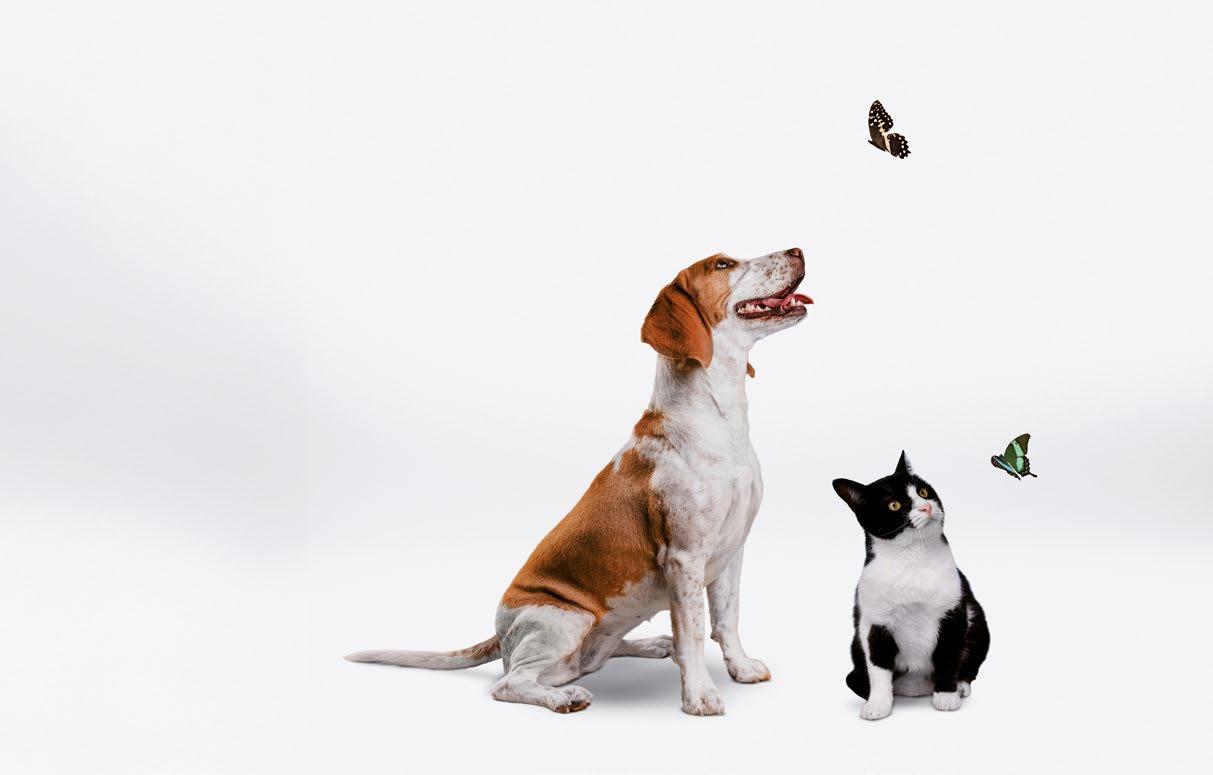
“Thousand dollars and research are destined to evidence if we can live on other planets that we forgot to take care of the one we live on.” All the animals are on the earth; it is the ground we walk on, where we extract resources and trees grow to shade. Everything comes from the same soil: food and its ingredients.
By Dr. Bonaura, M. Candela
Pet food manuf acturing companies put effort and money into achieving a neutral carbon footprint, promoting sustainable plastic usage, improving raw materials use, and saving energy, among other practices. However, which role do vets and owners play in the care of the environment?
Both pet nutrition and human feeding are important in environmental conservation. Companies should consider specific plans that identify their carbon footprint and launch concrete projects and actions. Everyone should have a positive attitude when caring about the environment, and we must raise awareness. As companies must inform owners about their sustainability plans, veterinarians must contribute.
What is the Carbon Footprint?
The carbon footprint is the amount of greenhouse gases that people, companies, cities, or products produce directly or indirectly. CO2 enters the atmosphere through different activities and has an environmental impact.
The specific environmental impact that each dog and cat, along with their owners, has not been studied, but we can build habits to minimize this.
How to collaborate with the environment and its care:
1. Choose food whose process is more sustainable (sustainable raw materials with optimized process, use of renewable energy, etc.). A clear example is the use of animal by-products or meat cuts that humans cannot consume because of cultural matters or visual qualities.
2. Optimize pet food portions to reduce waste.
3. Recycle correctly.
4. Give a second opportunity to pet accessories. On the other hand, pet food packs, bags, and packaging not only preserve food quality but also give information. Today, the aim is for them to be eco-friendly by their material or be recyclable/reusable. When choosing or recommending pet food, look at the information in the packaging to know how environmentally friendly the food is.
Sustainability is “the capability of society to use resources responsibly and consciously, avoiding the waste and environmental damage during the process.” In that way, we are all responsible for sustainability.
RECYCLABLE
COMPOSTABLE
To conclude, everyone takes part in the pet world. From our role, we are responsible for having big sustainable plans like companies or improving daily actions as people who care about companion animals’ health or have a pet as a family member.
As we mentioned in the first part of this article (January issue), the pet food industry is constantly seeking alternative ingredients and sustainable practices, which not only meet the growing market demand but also enhance pets’ lives, minimizing the environmental impact.
By Josiane Volpato, Ingrid Caroline da Silva, Isabela Bogo y Fernando González
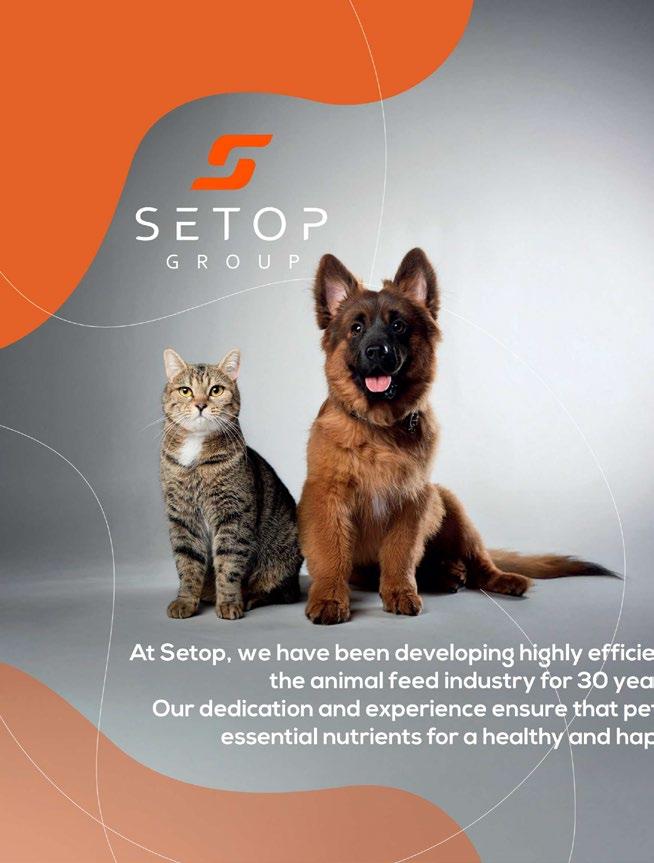
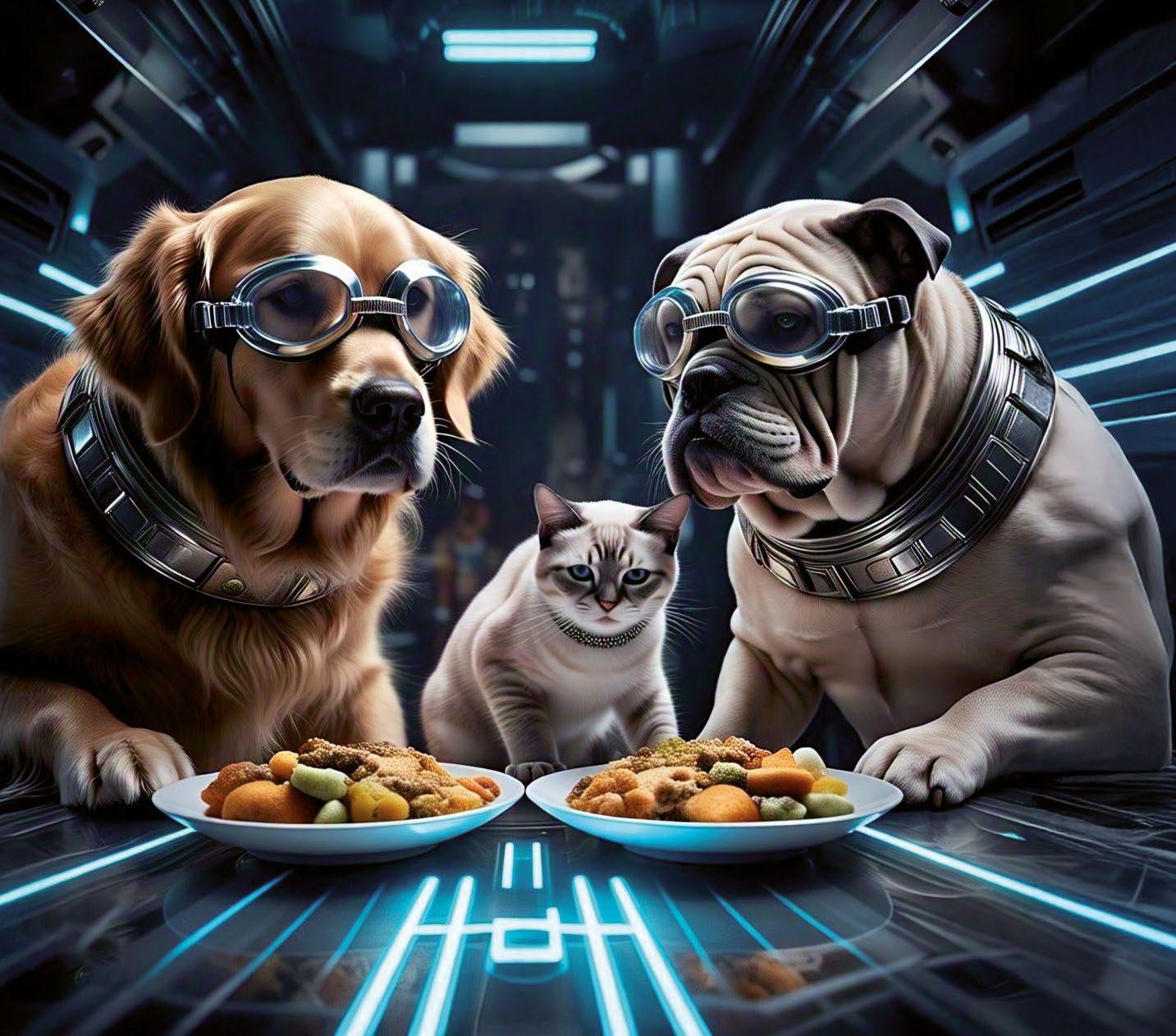
Another expectation for the pet food sector this year is the increase in the consumption of supplements, such as vitamins, fish oil, and probiotics. Especially probiotic snacks that help those pets suffering from digestive disorders and food allergies. Due to the bond between a pet and its owner, who wishes for its health, there is an increased demand for supplements that benefit skin health, fur, anxiety, and aging.
According to research from Packaged Facts in the USA, the most sellout supplements enhance joint mobility, which shows that pets’ health and well-being have priority for owners.
From the point of view of the pet food industry, in 2025, it is essential to consider that the recent concern about pets’ well-being drives new solutions, e.g.,


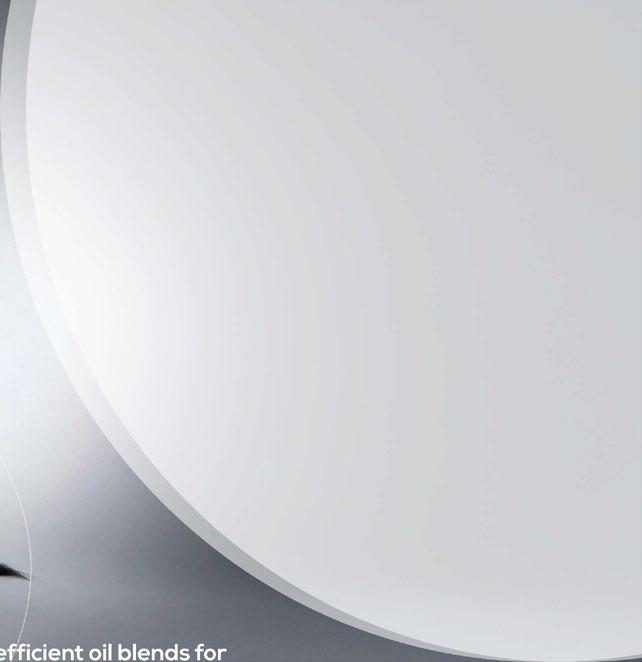


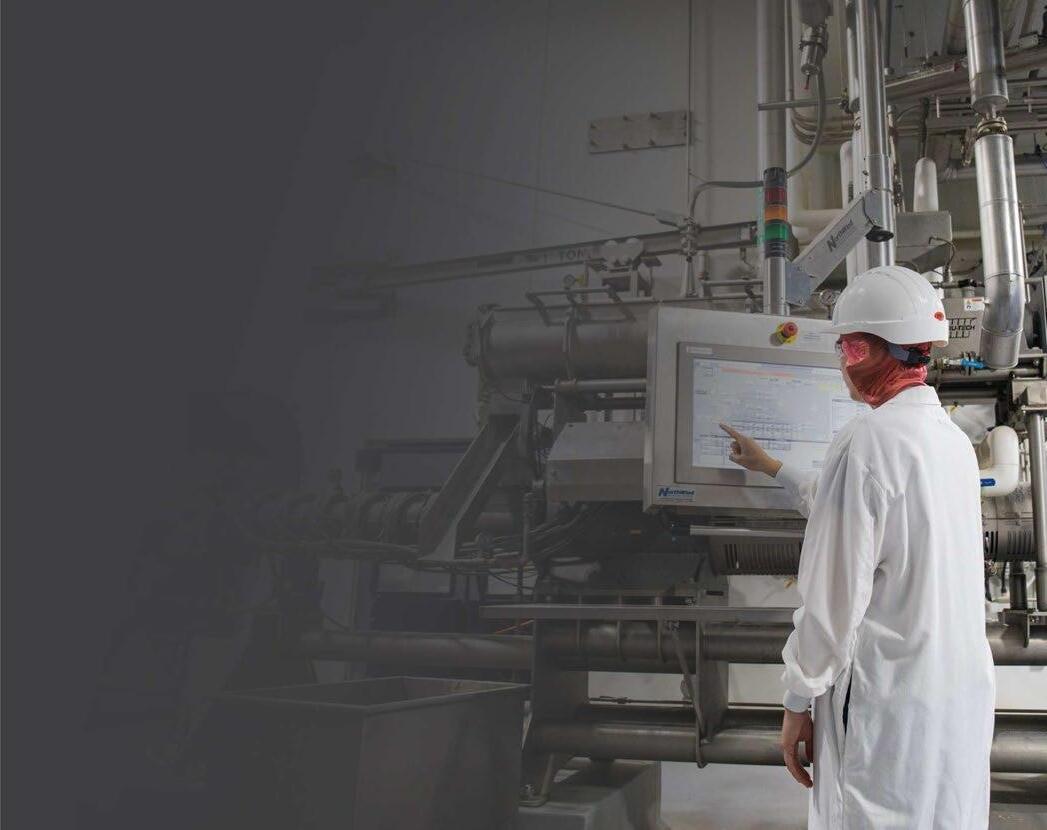
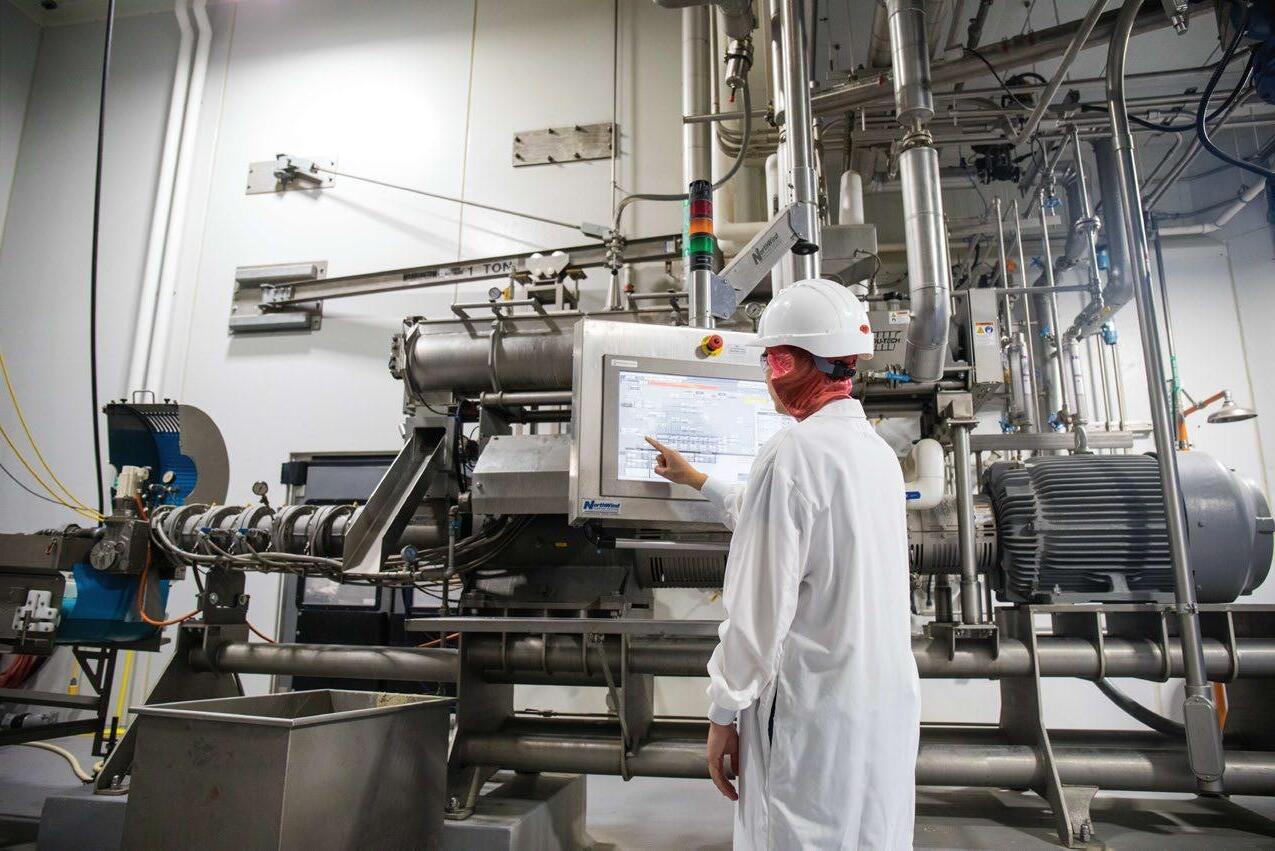
emerging companies that evaluate food acceptability, palatability, and digestibility of animals at home.
Since not all pet food manufacturing companies can test their product palatability and digestibility with their research animals, the emerging ones offer the service by using scientifically proven protocols, making pet food reliably testable at home. This provides manufacturers with key information about the product’s benefit in its usage as the animals used have different breeds and vary in ages and genders, which shows an illustrative outlook of the pet food population diversity to the food evaluation.
This methodology reflects the precise situation of pets and owners. Home testing offers an innovative approach essential to the pet food industry, which allows the testing of food palatability, acceptability, and digestibility to occur in the domestic atmosphere, providing trustworthy information about product acceptability.
The main advantage of home testing is the accurate reproduction of the consumption conditions among the destined population. Contrary to tests in controlled laboratory environments, where stress and changes in the routine can influence feeding behavior, tests at home allow animals to show their preferences naturally. In addition, these tests provide broader and more
diverse samples, considering age, breed, dietary record, and sensorial preferences, which ensure a more representative test of the pet population.
As they are home tests, owner perception is also a benefit. Pet parents can give valuable feedback about food consumption, behavior, and reception, and besides they provide their perspective on the new product’s sensorial characteristics, adding quality information that is not always obtained in laboratory tests.
Home testing can also be challenging. The first problem is controlling experimental variables. In a laboratory, factors such as the amount of food, consumption time, and competences between animals can be controlled. In home testing, the meddling of other pets, changes in the routine, and pet parents’ opinions can affect the results.






Moreover, owners’ support for the experimental protocol can vary. Its success depends on pet parents’ commitment to meet the established rules, accurate measures, and precise reports. To minimize challenges, it is essential that companies making home tests take on scientifically proven protocols, use standardized methodologies, and provide detailed instructions to the participants.
With the growing demand for true and reliable tests, specialized home testing companies are gaining ground in the market. They offer complete services to pet food manufacturers, developing and carrying out food testing protocols that rigorously meet scientific standards.
Companies in the sector have stood out for their detailed and informed tests, which help the industry to develop more attractive and efficient products. These organizations use technologies like remote monitoring, data collection apps, or AI for result analysis to guarantee accurate and reliable tests.
Considering concerns about pets’ health and wellbeing, home testing tends to consolidate as an essential standard for trying new products. It offers companies reliable data about food acceptability and its effects on daily pet lives. This methodology not only contributes to the pet food industry’s progress but also reinforces consumers’ loyalty to brands that use it.
The industry faces the challenge of including sustainable practices to maintain food quality at a competitive price to also ensure a significant advantage since consumers are aware of the environmental impact that pet products have and seek brands that share their values.
Finally, those who benefit from the trends incorporated in the pet food market are pets

As concerns about environmental problems grow worldwide, the pet food industry faces the challenge of balancing nutritional quality and environmental responsibility. The carbon footprint (a significant indicator of the environmental impact) is the main worry in this context. Reducing it not only is about minimizing emissions in the production process but also having a holistic approach, which comprises nutrient selection to the manufacturing and elimination processes.
By Ludmila Barbi Trindade Bomcompagni
Carbon Footprint in the Pet Food Industry
The carbon footprint of pet food is influenced by several factors, including the ingredients, production methods, packaging practices, and transport. Traditionally, animal proteins, such as beef, chicken, and fish, represent one of the biggest sources of greenhouse gas emissions (GHG) because of the heavy usage of resources (soil, water, and
energy). Moreover, conventional agricultural practices and intensive livestock contribute to deforestation and gas emissions, e.g., methane and carbon dioxide.
In this way, considering the pet food production chain and adopting more sustainable practices is essential to reduce the impact, meet the growing consumers’ demands, and achieve global decarbonization goals.









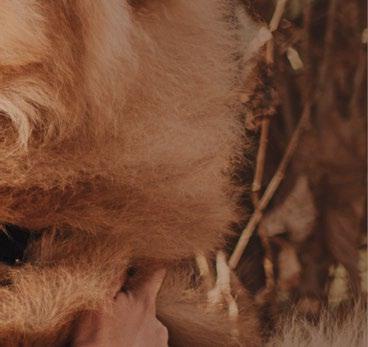


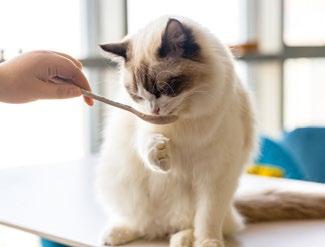

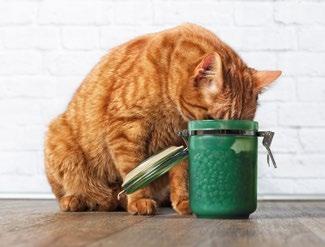
food since the production process is more efficient, and the transport has less impact because of its agility and dry food compactness.
Snacks: Their impact depends on the ingredients. The carbon footprint of plant-based or insect protein snacks is lower compared to those made of animal proteins.
Premium and Super Premium products: Many premium brands invest in sustainable practices, choosing fewer impacting ingredients and enhancing their process to reduce emissions.
Sustainability in the pet food sector requires an integrated approach that involves the selection of sustainable ingredients, the smart use of natural additives,
production processes optimization, and responsible management of waste. Ingredients such as alternative proteins, algae, and additives (zeolite and yucca) can be allies in carbon footprint reduction, promoting more efficient and responsible animal nutrition.
In addition, pet food manufacturing can significantly benefit from energy efficiency, renewable sources, and a circular economy. Brands investing in these practices not only reduce their carbon footprint but also build a legacy of respect for the environment, appealing to more aware consumers.
Sustainability is not a temporary trend but a need for the future of the pet food industry. Companies adopting sustainable practices position themselves for commercial success and the preservation of the planet.
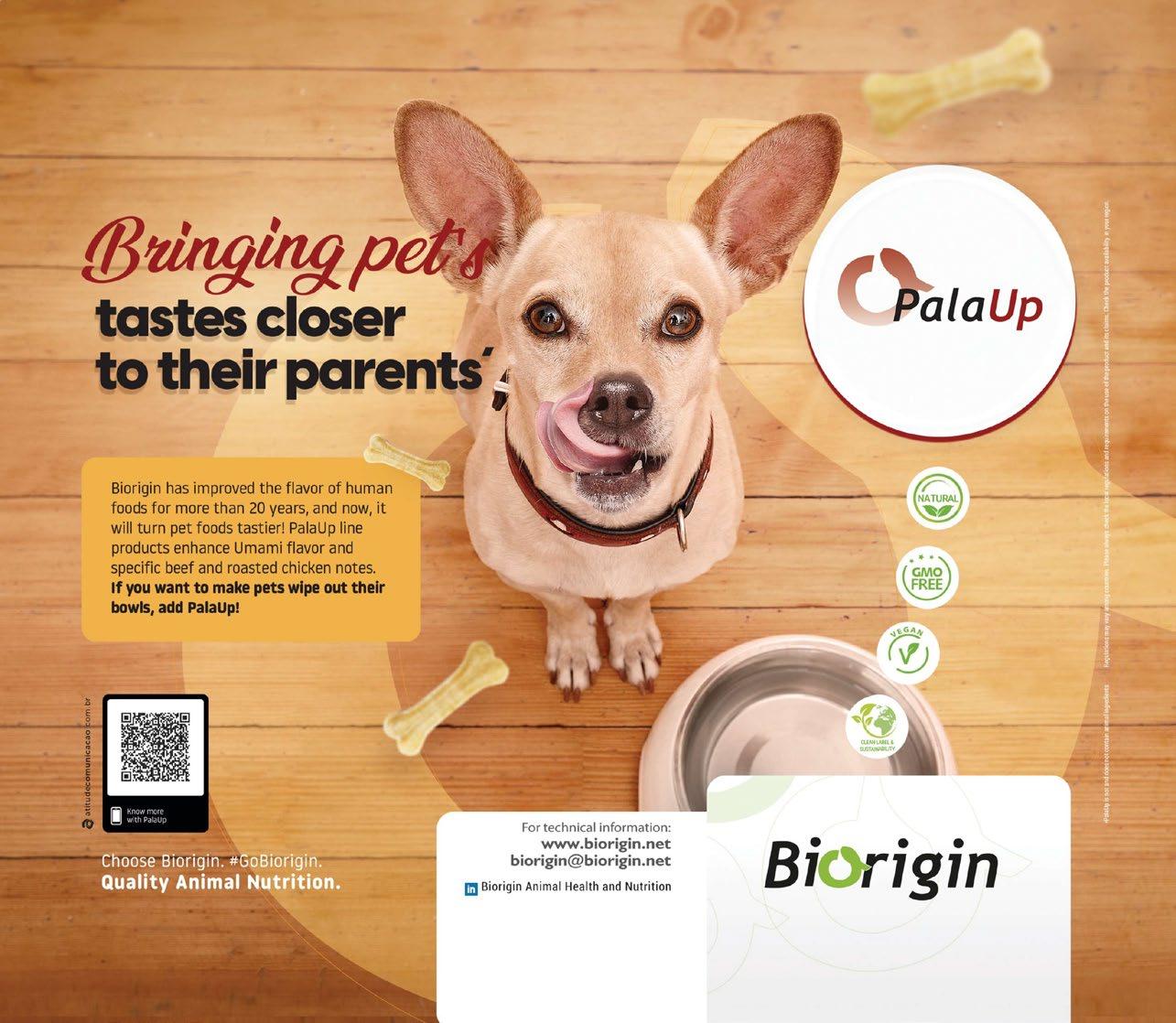

In Latin America, a silent evolution is slowly emerging—or, in other words, it is being baked, extruded, and packed in modern pet food mills. While the spotlights come into sectors such as technology, energy, and technological startups, the pet food area emerged as one of the most dynamic sectors in the region.
By Iván H. Franco
With investments reaching 1,000 million dollars in some years, the industry has consolidated but also became an attractive point for the national and international capital markets.
Pets are no longer just companion animals. Today, they are considered family members. This cultural change has redefined consumption, boosting sustained demands for specialized, fresh, healthy, and convenient products. Companies got the message and are answering with huge investments in infrastructure designed for efficient production and to serve the local market as well as the exporting one.
In addition, there is an important item: markets in the region are intense producers that do not generally depend on importations from other countries or regions. Building their own infrastructure is essential in the pet food sector.
From Mexico to Argentina (including Chile, Costa Rica, and Bolivia), investments are geographically distributed but have the same goal: increase capacity, meet the growing demands, and eventually, prepare themselves for exporting. There is a graphic of the main bids in the industry below: Estimated amount of investments: Billion dollars
Building of a pet food mill in Cajamarquillo, Chosica. Production capacity: 70,000 tons per year.
Mexican company with more than 40 years of experience in food and animal nutrition. It offers pet, farm, and aquaculture products.
New facility in Porto Amazonas, Paraná (92,000 sq. of constructed area). Capacity of production: 660,000 tons of dry food.
Company with more than 40 years in the agriculture and livestock industry, which specializes in animal nutrition and pet food manufacturing.
Investments in technology to widen the production capacity. New products launching, including the Ultra-Premium line: Juvenia Nutrition.
Opening of a new plant in Chapecó destined to produce flavors for pet food, setting a production record.
Bolivian market expansion, including four production lines for dog and cat food.
Investments in innovation and leadership in the pet food market in Argentina.
Investment in new production lines and improving infrastructure to meet the growing demand in the Colombian market.
A new production line opening in Guanajuato to strengthen its presence in the local market.
Expansion of the plant in Silao, Guanajuato (new dry and wet food production lines).
Expansion of the plant in El Marqués, Querétaro. In 2022, it doubled its capacity to 70,000 tons per year. In 2024, it added 14 production lines to supply LATAM.
Opening of a wet pet food production line in Yecapixtla, Morelos. It reduced importation reliance.
Opening of a facility in El Roble, Puntarenas (pet food). Production capacity: 500,000 cans per day.
Investments in automation. Expansion of its facility in General Las Heras.
Expansion of the pet food facility in Sagrada Familia, Región del Maule (two dry food production lines and improvements in the wet line).
Nestlé Purina in Mexico: It realized a significant investment of more than 220 million dollars in Silao. Its approach aims to the internal growth and export potential with new dry and wet food lines.
Carozzi: Consolidated its leadership in the South Cone with two clear goals: to expand its facility in Chile and build a strategic plant in Peru. Its brands (Master Dog and Master Cat) are regional symbols.
The reasons for this phenomenon are different and powerful:
Culture of well-being: With pet humanization, nutritional needs have been treated with the same rigor as one family member.
Sustained and anticyclical demand: The industry demonstrated resilience even in critical moments. Families do not spend less on their pets.
Competitive conditions: Latin America offers access to raw materials, relatively low production costs, and trade agreements that allow exporting to multiple destinations.
Pet demographic growth: Over 200 million dogs and cats are in the region. This number continues to grow, fostering industry drivers.
Pet food is no longer a secondary category on supermarket shelves or a marginal line in the agro-industry portfolio. Today, it is one of the industries with more strategic value for regional development: it offers employment, seeks constant innovation, and aligns with consumer’s new priorities (health, sustainability, and advantages).
Investments in Latin America are not a coincidence. They are a clear sign that the sector is growing and show that those who rely on improving their capacity and sophistication will achieve cost-effectiveness and leadership.
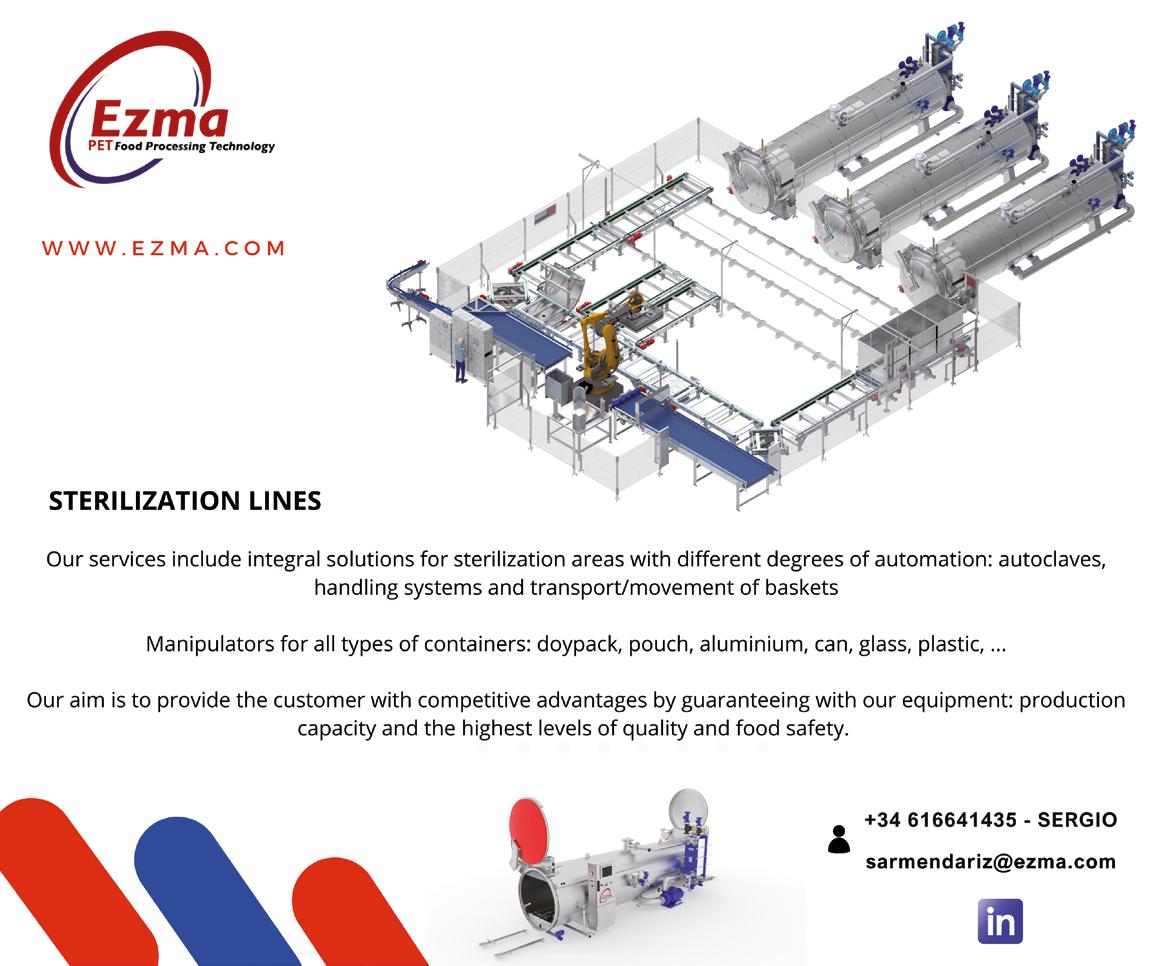

Following the goal of reducing emissions and the environmental impact of a company’s products or even the industry’s value chain, it is necessary to recognize SBTi (Science-Based Target Initiatives). This initiative motivates and incentivizes companies to quantify their emissions footprint and set targets, aiming to achieve or sustain 1.5°C (or at least below 2°C) emissions. In our industry, the majority of emissions come from the supply chain, known as Category 1 of Scope 3 (purchased goods and services) in the GHG Protocol, which relates to raw materials purchased to create food products. Measuring the carbon footprint at the product level facilitates a more data-informed discussion about reduction strategies throughout the supply chain, in addition to expanding opportunities to support initiatives to reduce emissions throughout the value chain.
The scientific community is increasingly focused on sustainability. The increasing demand for pet food
is also consequently increasing the resources used. To address the impact of production, it is necessary to have accurate data and validated information that allows for informed and objective decision-making.
Life Cycle Assessment is a standardized methodology used for the evaluation of a product’s environmental impact, process, or service throughout its entire life cycle, from the extraction of raw materials to final disposal, considering aspects such as energy consumption, GHG emissions, water use, and waste generation, among others. It consists of four main phases:
Goal and scope definition: The study’s boundaries and the impacts to be assessed are defined.
Inventory: Data is collected on resource use and emissions associated with each life cycle stage.
Impact assessment: The inventory data is translated into specific environmental impacts.
Result interpretation: The information obtained is analyzed to identify opportunities for improvement and impact reduc tion.
A life cycle assessment of Brazilian dog food identified the formulation stage as the most influential in a product’s sustainability, accounting for between 70% and 90% of the total environmental impacts. Some of these ecological consequences included terrestrial and marine eutrophication, excessive nutrient accumulation, ocean acidification, particulate pollution, and climate change.
LCA is a system that allows companies to identify critical points in a production process and make data-driven decisions with the aim of reducing environmental impact. Some key areas where this methodology can be applied are:
1. Raw materials and formulation: The ingredients used to produce pet food represent one of the main sources of environmental impact, such as meat or fish, for example, which are obtained through a process that needs many natural resources. With the Life Cycle Assessment process, a company can evaluate the impact of using more sustainable options, such as alternative proteins from insects, algae, or meat by-products.
2. Production and processing: Production plants consume energy and water, in addition to generating emissions and waste. A detailed analysis helps identify
ways to optimize energy consumption, reduce unnecessary water use, and improve overall efficiency. It also provides clarity on the benefits of incorporating renewable energy or cleaner technologies.
3. Packaging and distribution: Product packaging and logistics also have a significant environmental impact. LCA can be used to analyze the most sustainable packaging choices, such as biodegradable, recyclable, or reusable packages. In the case of distribution, alternatives can be evaluated to optimize delivery routes and reduce pollution.
4. Usage and disposal: Pet food impact does not end with consumption but with packaging disposal and contammination. Having an LCA allows us to design recycling strategies, reduce waste generation, and promote environmental education among consumers.
Implementing the Life Cycle Assessment process in the pet food industry allows us to visualize countless benefits, from reducing the carbon footprint, optimizing the use of non-renewable resources, and, crucially, making better decisions. Its benefits and opportunities position LCA as a highly useful tool for the pet food industry on its journey toward sustainability.
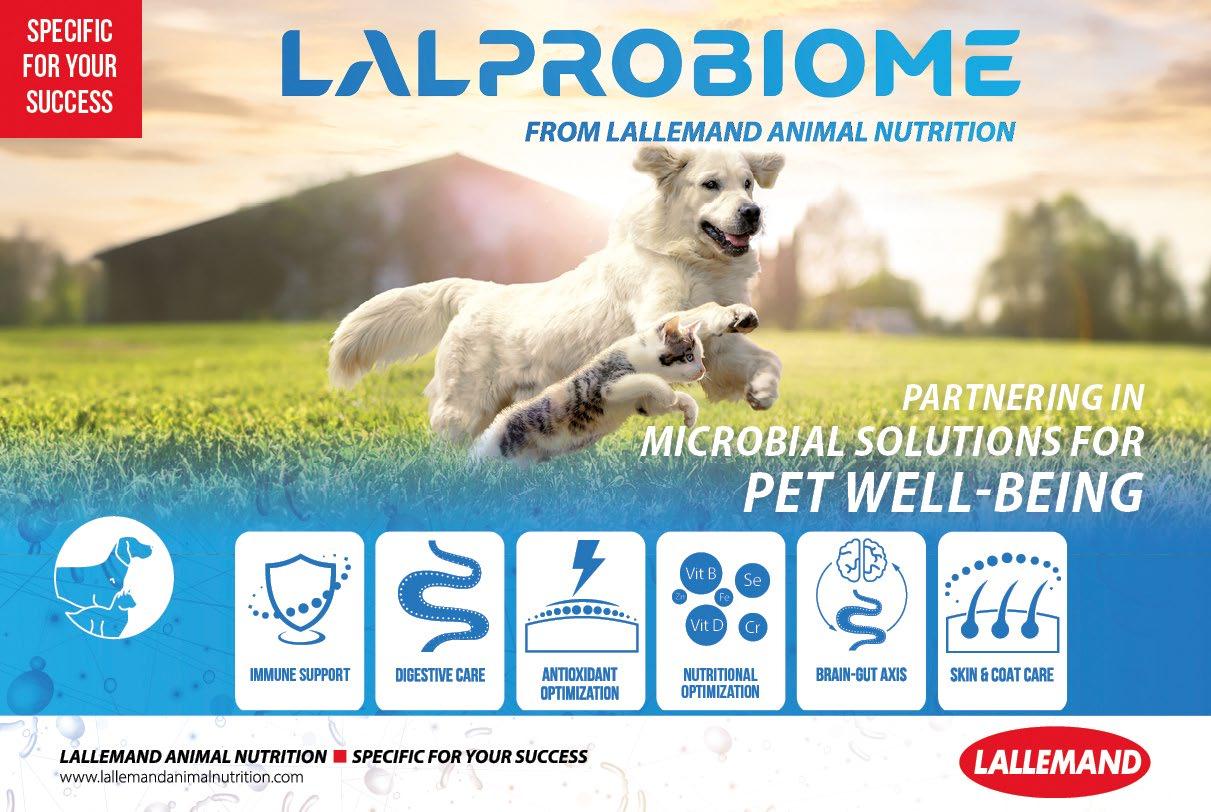
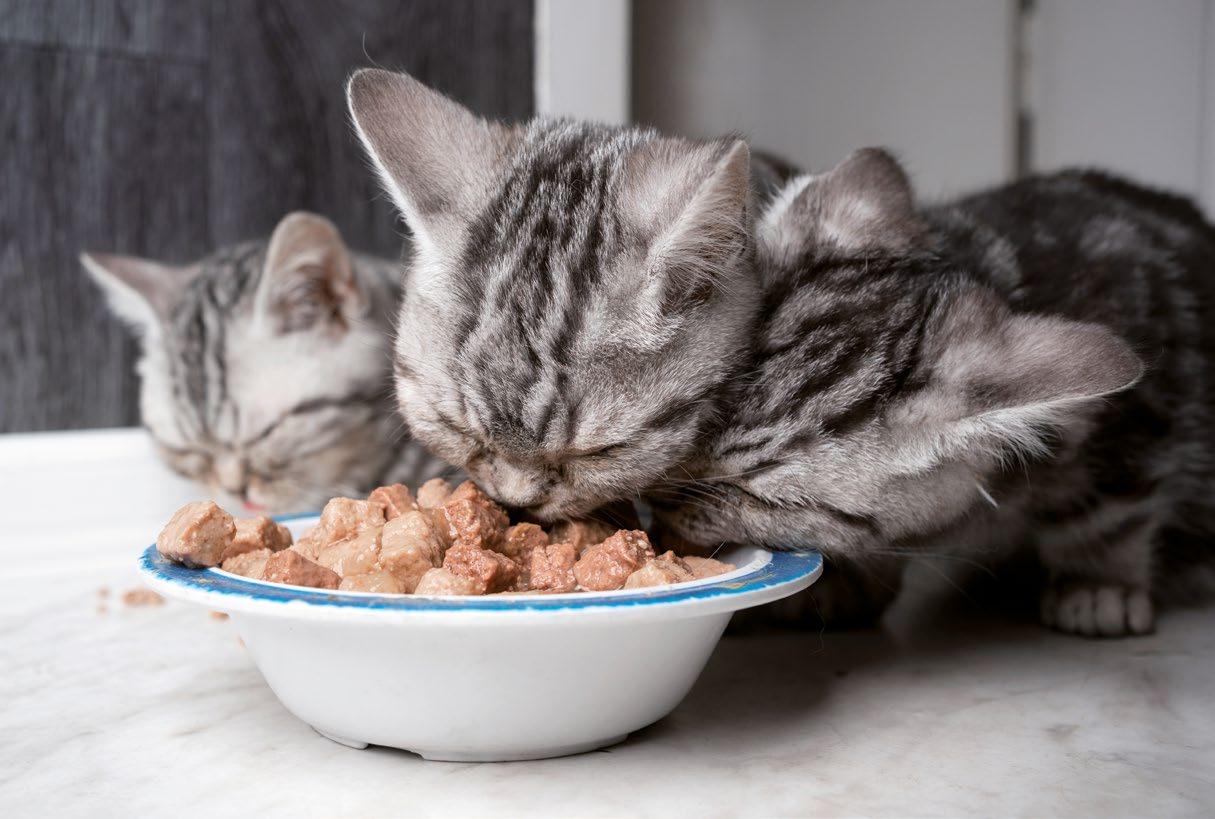
Fish and fish by-products are excellent sources of high-quality protein for cats and dogs. However, the handling, processing, and storing of raw materials can increase variation and negatively impact their technological properties.
By Dr. Joy Campbell -Senior Director of Global Pet Food Technical Services - APC
This study evaluated the use of spray-dried animal plasma (SDAP) as a binder in fish by-product recipes for chunks in gravy. The results demonstrate that SDAP inclusion in recipes significantly improved the consistency (hardness), elasticity (springiness), cohesiveness, chewiness, and juiciness of final wet products.
These improvements were observed in a chunk recipe with a 35% content of mixed salmon and tuna by-products (Experiment 1), and another recipe with chunks having a final content of a 4% salmon by-product (Experiment 2). There was a positive linear effect of increased SDAP inclusion in the recipes for most of the technological parameters measured, such as elasticity, flexibility, juiciness, and hardness.
Our findings indicate that SDAP is an excellent nutritional binder that can enhance the final technological properties of wet pet food products using high-quality fish recipes and, potentially, in recipes containing protein-rich fish by-products with low functionality.
Conclusion
Plasma shows a positive, linear effect on elasticity, flexibility, juiciness, and hardness in fish by-product recipes.
















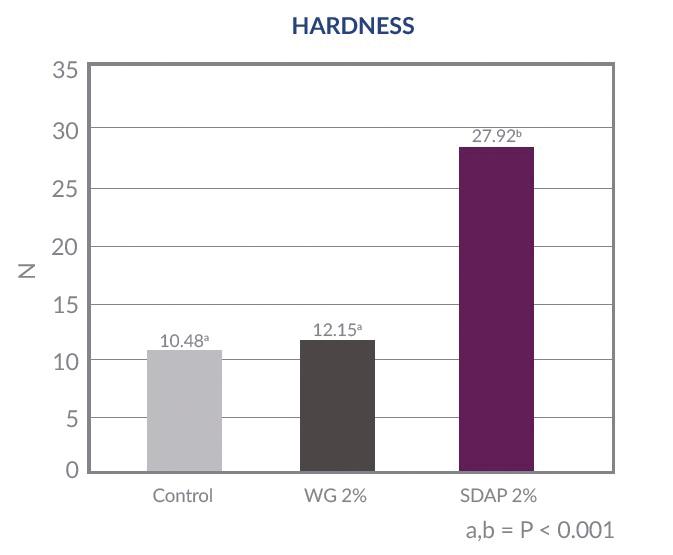
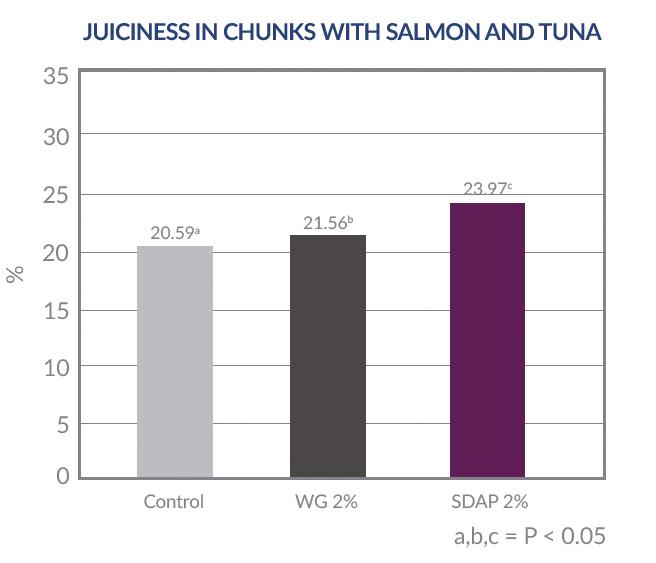
2% of SDAP had a greater impact of increasing hardness and juiciness compared to 2% WG.
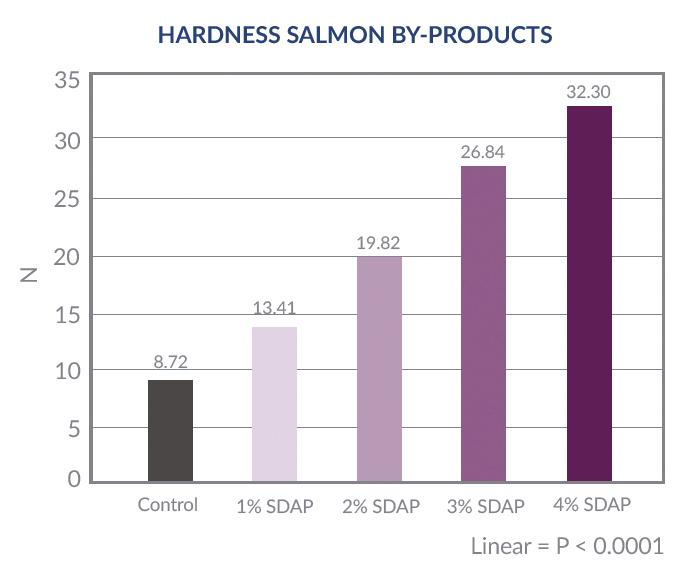
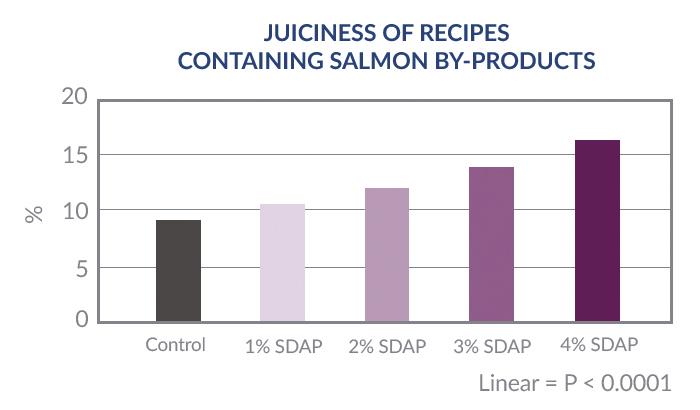
Increasing levels of SDAP linearly increased hardness and juiciness of the chunks containing salmon by-products.
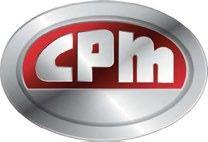
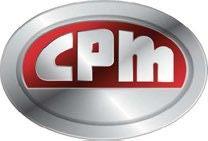





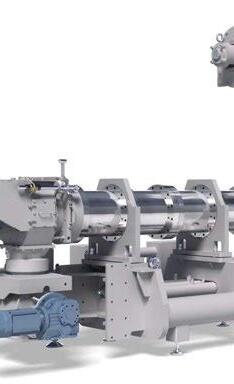

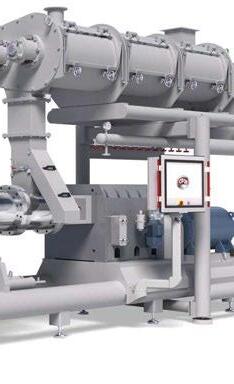







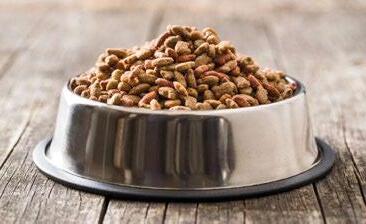

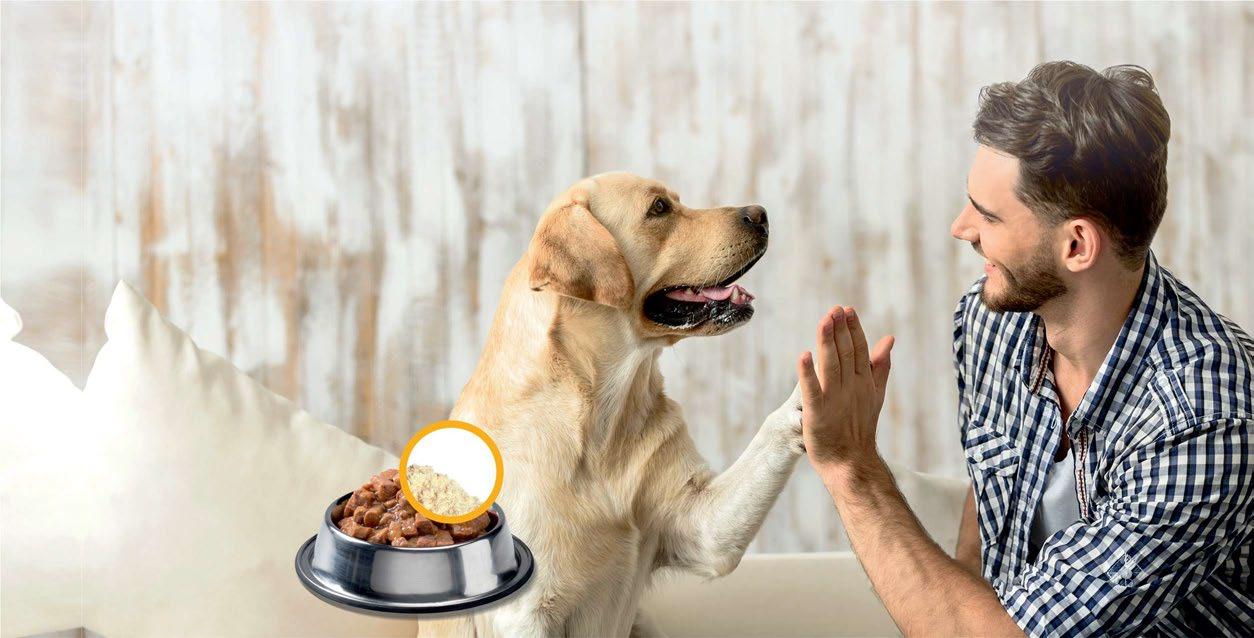
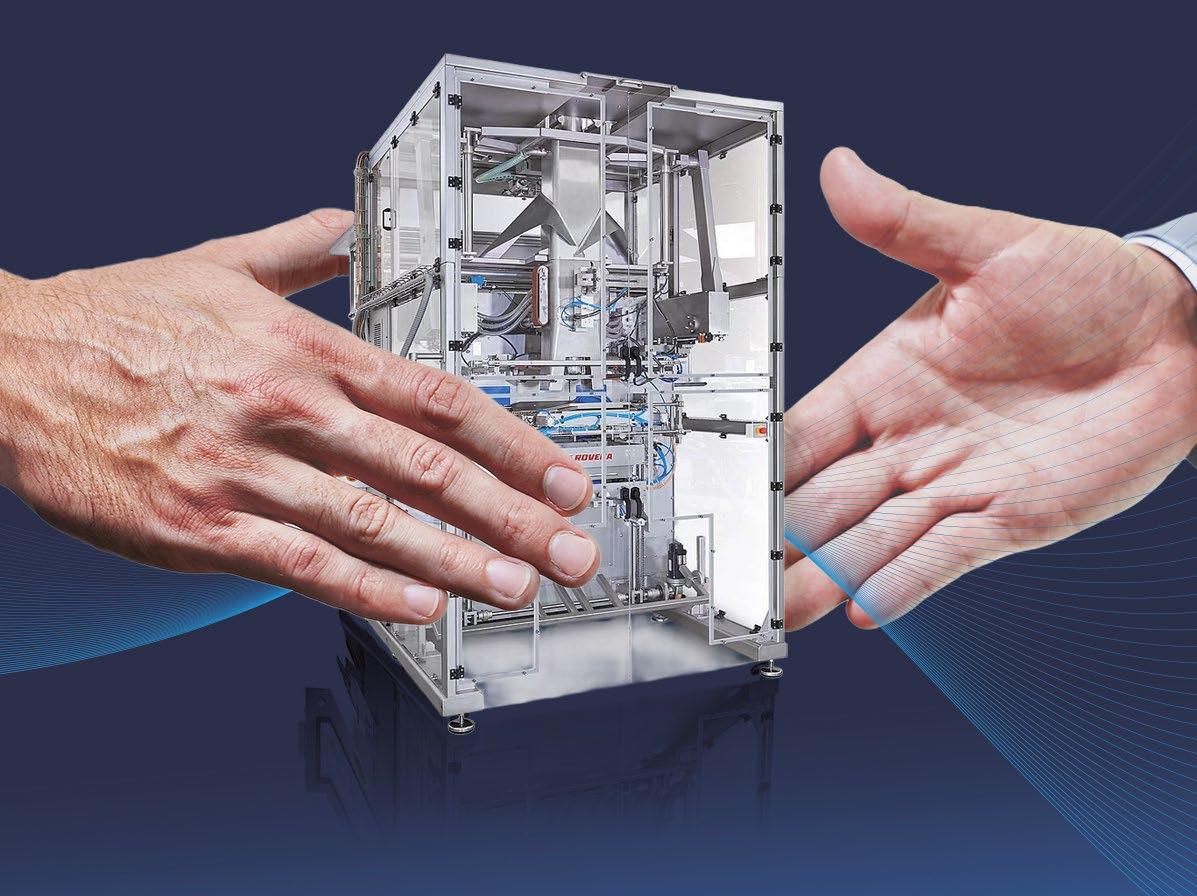
The packaging industry faces a key challenge: balancing packaging functionality with the growing need for sustainability. In this context, collaboration between various stakeholders in the production chain is essential to develop innovative solutions that reduce environmental impact without compromising the quality and efficiency of processes.
By Clivio Solutions
At Clivio Solutions, we believe in the importance of synergy between technology and materials to drive positive change in the industry. This is why we organized a coworking space with our partner, Rovema, and one of the world’s leading chemical companies. During this meeting, we spoke with Guillermo Navarro, Sales Director for LATAM at Rovema , about how this alliance is driving the evolution of sustainable packaging.
Our first question to Guillermo was about the link between Rovema and the company, how the collaboration started, and the key aspects of this joint work:
“They contacted us because they had been working with their converters to develop a more recyclable


























































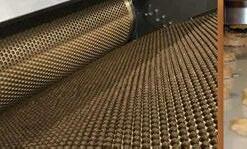















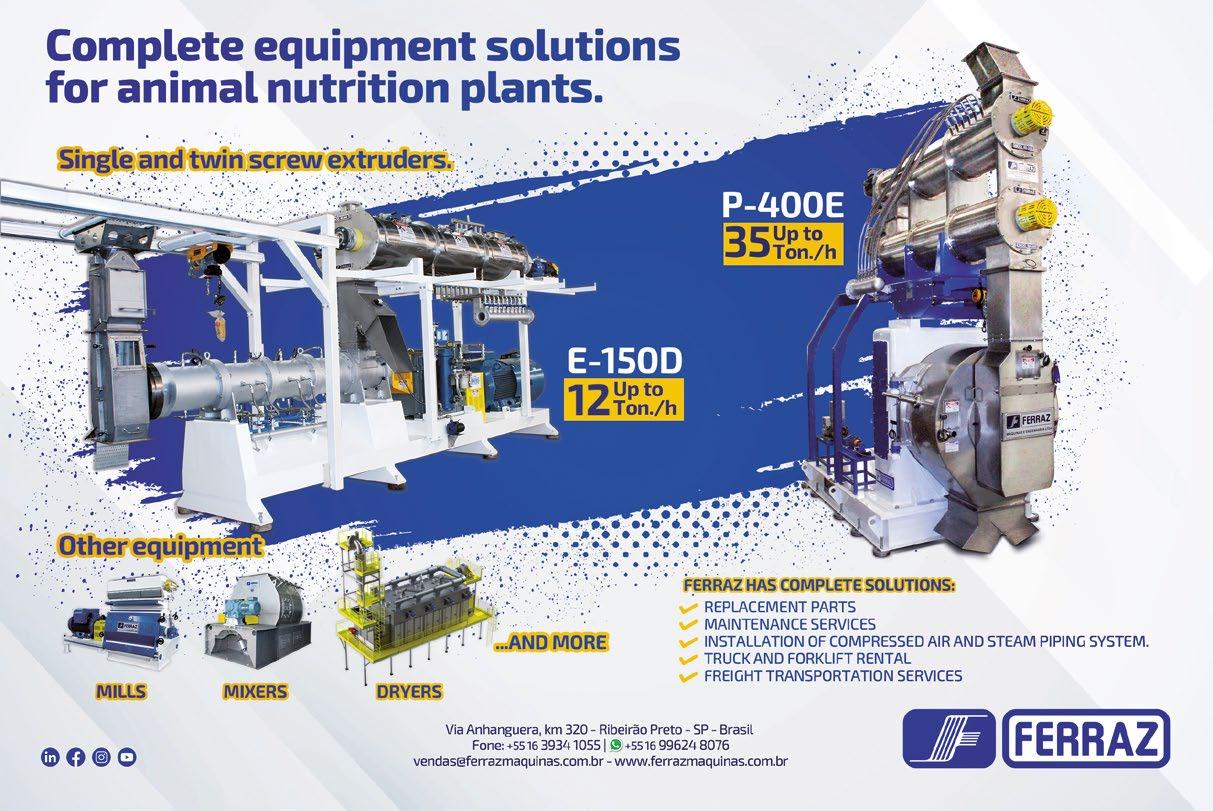
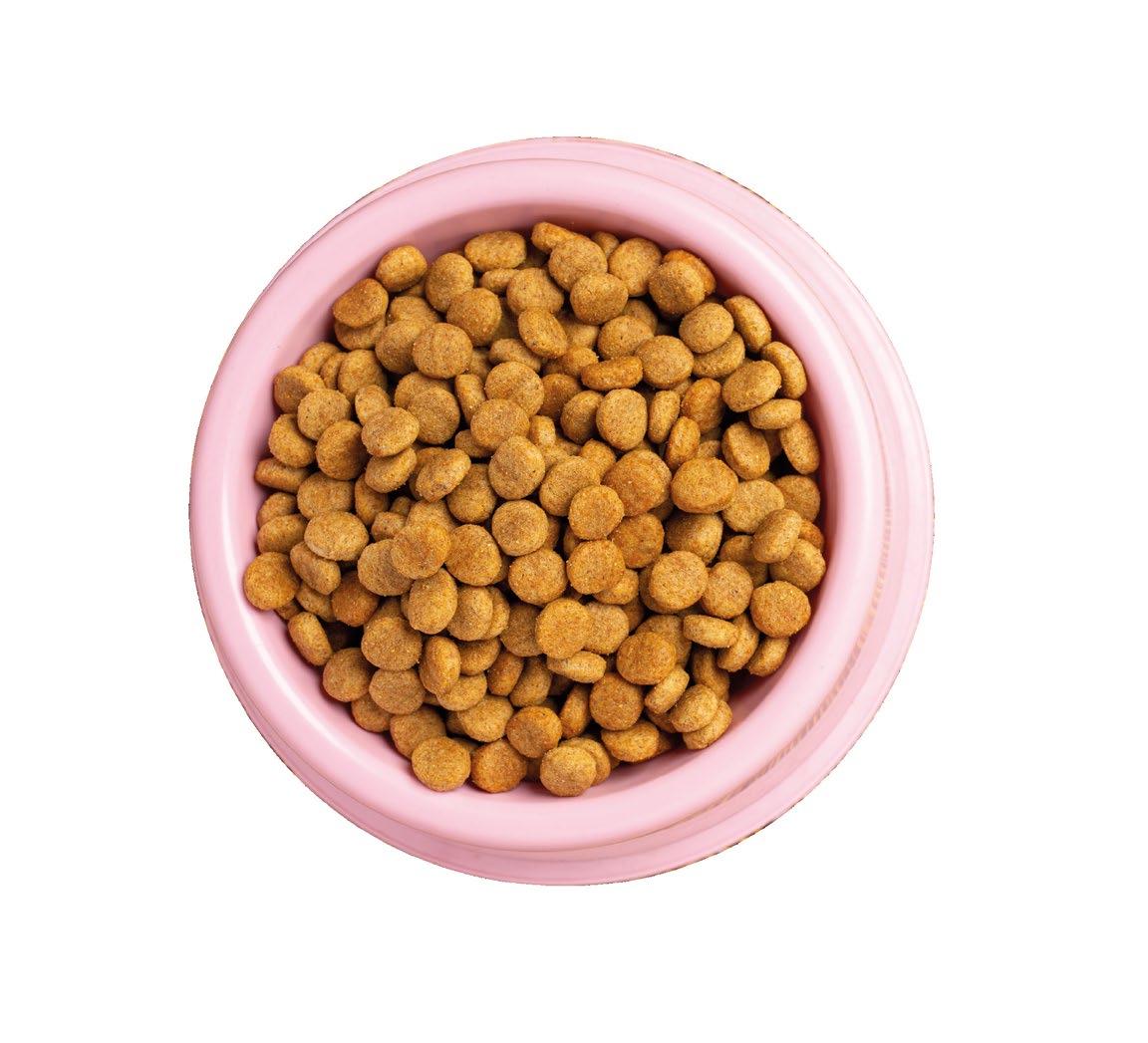
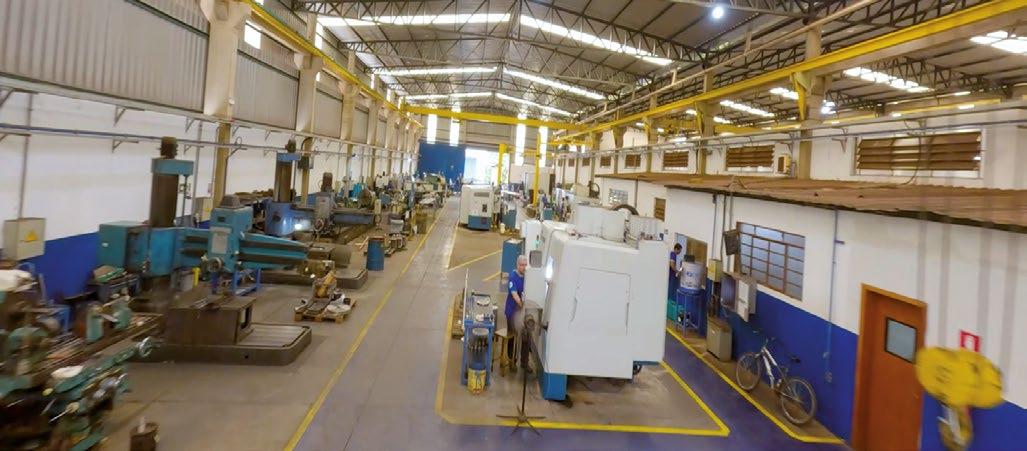
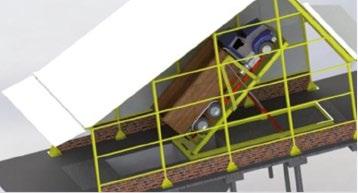
On the other hand, dosing is still manual in the inclusion process of micro-ingredients (vitamins and minerals, or premix).
The automatization of this process has two main advantages: 1) reduces the labor need, since manual weighing needs at least one or two operators; 2) reduces the error percentage in the formulation (in the manual process, operators can make mistakes when dosing the amount of vitamins). If this happens, it will
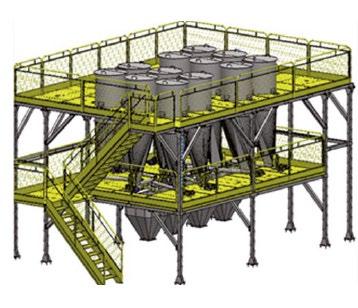
directly affect food efficacy, and the animal consuming it will not have appropriate nutrition and may show different zootechnical indicators than expected.
Feed bagging and palletizing systems require more labor than others. There are some options to automate these processes, but many factors must be considered, e.g., package size; capacity of bags per minute/hour in each package (bagging systems often have lower capacity per hour when dealing with smaller volume packages); the type of bag, some of them are only for plastic packaging while others work with paper and raffia; pallet size, automated palletizing systems size according to pallet’s measure; the ability of suppliers to provide technical assistance and spare parts, etc.
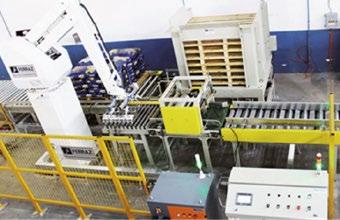
If the factors that affect the equipment size are analyzed and the hiring, installing, and maintenance procedures are well done, automation can generate high profits. It eliminates the requirement for four employees per shift (two in the bagging line and two in the palletizing). Besides, it drastically reduces mistakes, such as irregular bagging sealing and wrong distribution of bags.






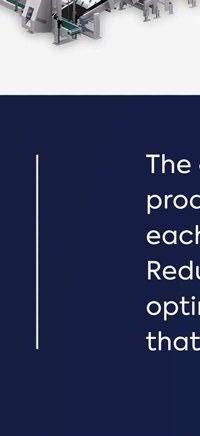

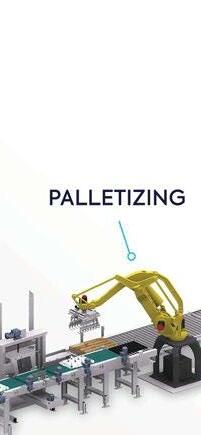

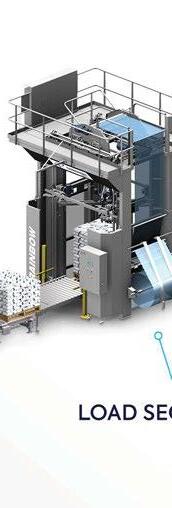





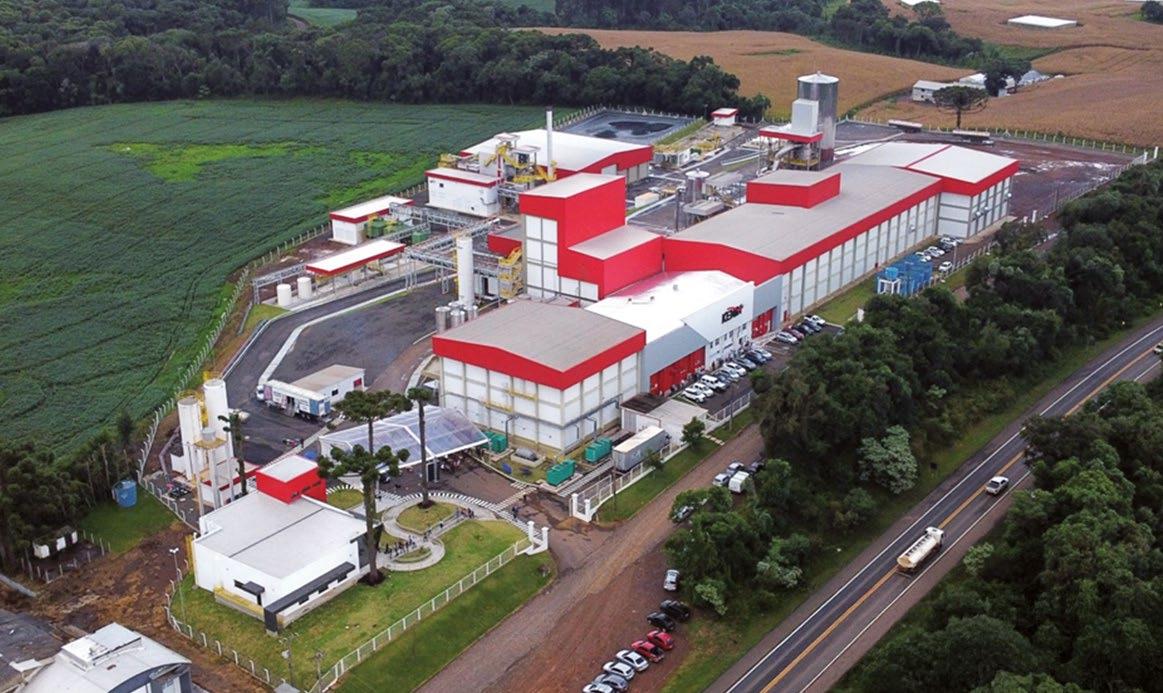
The pet food industry is undergoing a significant transformation, driven by pet owners’ desire to provide their companion animals with safe, nutritious, and flavorful food. The sector growth reflects not only evolving consumer preferences but also a deeper understanding of the importance of nutrition for pets’ longevity and quality of life.
By Kemin Nutrisurance
In this context, Kemin stands out as a strategic partner for dog and cat food manufacturers, offering innovative solutions that ensure product quality, safety, and palatability. The company combines science and technology to develop functional ingredients that meet pets’ nutritional and sensory demands, always prioritizing food quality and safety.
Kemin Nutrisurance is the business unit of Kemin Industries dedicated exclusively to the Pet Food & Rendering segment. With over 60 years of global experience in applied science for nutrition and food safety, we continuously invest in research and development to provide advanced solutions that meet the increasing demands of the pet food market.
Our commitment is to enhance the quality of life
for companion animals through superior nutrition. This means developing products that not only meet pets’ nutritional needs but also contribute to their digestive health and overall well-being. Additionally, we provide specialized technical support to manufacturers, helping them create more efficient and safer formulations.
The pet food industry requires an increasing level of specialization, and Kemin is at the forefront of this evolution. We invest in innovative technologies to ensure pet food is safe, stable, and highly palatable. Our global presence and commitment to innovation make Kemin a leader in the industry.
At Kemin, we believe that science has the power to transform lives. Our purpose is to develop safe and effective solutions to ensure that pet food is as nutritious and delicious as it is safe for consumption.






















This mission is built upon core values such as:
• Integrity: Commitment to transparency and ethics in all relationships.
• Innovation: Continuous investment in research to offer the best solutions.
• Quality: High-standard products that meet regulatory requirements and exceed market expectations.
We are convinced that our role in the pet food industry goes beyond simply producing ingredients. Our mission is to contribute to a safer and more innovative sector, raising the standards of quality and animal welfare.
Antioxidants: Protection against oxidation
Pet food is highly susceptible to oxidation, a process that compromises product quality and palatability. When ingredients oxidize, changes in flavor and aroma occur, making the food less appealing to animals and reducing its acceptance. Additionally, oxidation can lead to the degradation of essential nutrients, impacting food’s nutritional value.
To prevent this issue, Kemin offers natural and synthetic antioxidant solutions that preserve ingredients and provide greater food stability, contributing to balanced and safe nutrition. Our antioxidants are developed with advanced technology to offer prolonged protection, ensuring that pets receive highquality food for longer.
Food safety is a growing concern in the pet food industry. Microbiological contamination can compromise animal health and damage brand reputation. Additionally, the
presence of toxins can pose significant risks to pets, making it essential to adopt effective control strategies.
With advanced solutions for control and preservation, Kemin helps manufacturers ensure safe, risk-free products. Our quality control systems are rigorous and follow international standards to guarantee that food is safe from raw materials to the final product. We work to mitigate risks and provide manufacturers with the tools they need to maintain food integrity over time.
A pet food product must not only be nutritious but also flavorful to ensure that pets consume it willingly. Food acceptance is a critical factor for proper nutrient intake and for minimizing waste. If a pet rejects its food, owners may seek alternative options in the market, directly impacting brand loyalty.
Kemin develops solutions that enhance the aroma and taste of pet food, increasing animal acceptance and providing a more enjoyable eating experience. We work with innovative ingredients and advanced technological processes to create palatants that stimulate pets’ appetites and ensure a balanced, pleasurable diet.
Beyond ensuring safety, stability, and taste, we also invest in functional ingredients that promote digestive health, immunity, and overall pet well-being. With a focus on precision nutrition, we develop solutions that add value to products and contribute to healthier pet lives.
Functional nutrition is becoming a major trend in the pet food market , and Kemin is dedicated to offering ingredients that go beyond basic nutrition. Our


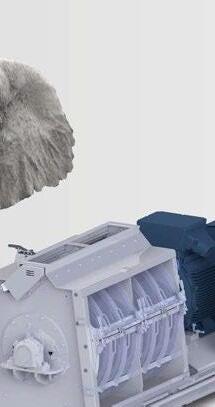










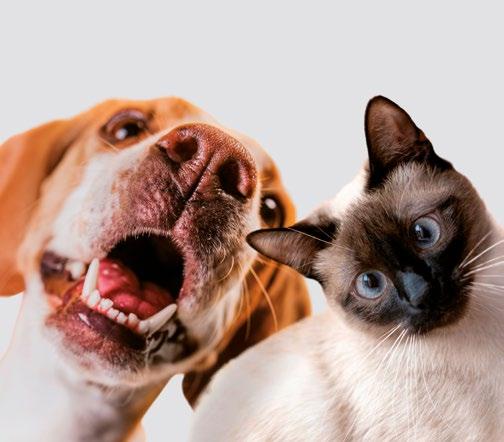
solutions include components that support gut microbiota balance and strengthen the immune system, helping manufacturers create food that truly makes a difference in pets’ lives.
Innovation is one of Kemin Nutrisurance’s core pillars. With state-of-the-art research centers and a
team of dedicated exper ts, we develop science-based solutions to meet market needs. We continuously invest in new technologies that reduce waste and optimize the supply chain.
With operations in multiple countries, Kemin is strategically positioned to serve customers worldwide. Our personalized service and specialized technical support ensure that every pet food manufacturer has access to the best solutions for their specific needs. Additionally, our global presence allows us to closely monitor market trends and adapt our solutions to different regulatory requirements and realities.
As a result, Kemin Nutrisurance has become a reference in the pet food industry, offering innovative and scientifically proven solutions to ensure safer, more nutritious, and tastier food for dogs and cats. Our commitment to science and quality places us at the forefront of the sector, contributing to pet well-being and owner satisfaction. With a strong portfolio and a highly skilled team, we continue to transform pet nutrition and elevate industry standards.
If your goal is to provide the best for companion animals, Kemin is the ideal par tner for this journey.

nutrition and development.
Holistic health approach: Pet food is no longer just about basic nutrition; it includes functional benefits like immune support, digestive health, and cognitive reinforcement.
Functional ingredients: The demand for essential fatty acids, natural antioxidants, and adaptogens is on the rise as they contribute to pets’ longevity and overall well-being.
Natural and transparent labeling: The shift towards clean-label products has increased significantly, pushing brands to reformulate without unnecessary additives, using traceable and sustainable ingredients.
At Grupo Harmony, quality and sustainability are fundamental pillars of our business. We operate under strict control standards to ensure the safety and traceability of every ingredient we supply.
Our approach is based on:
Continuous market monitoring: We anticipate trends and regulatory changes to ensure our ingredients align with industry demands.
Flexible and customized solutions: We understand that one-size-fits-all solutions do not exist. Each client and formulation is unique, and we tailor our products to
meet specific project needs.
Sustainability in the industry: We prioritize responsibly sourced ingredients, aligning with circular economy principles and sustainable practices that reduce environmental impact.
This commitment is reflected in our international certifications and our partnerships with reliable suppliers who share our vision for excellence and responsibility.
In a rapidly evolving market, differentiation is key. At Grupo Harmony, we leverage our expertise, industry knowledge, and extensive distribution network to support clients at every stage of their product development journey.
From ingredient selection to final formulation, we offer a holistic approach based on quality and innovation. Our mission is to continue being a strategic partner for brands looking to stand out in the premium and superpremium pet food segment.
If you are looking for high-value ingredients to elevate your pet food product line, contact us. We are ready to collaborate and develop together the next generation of animal nutrition products.
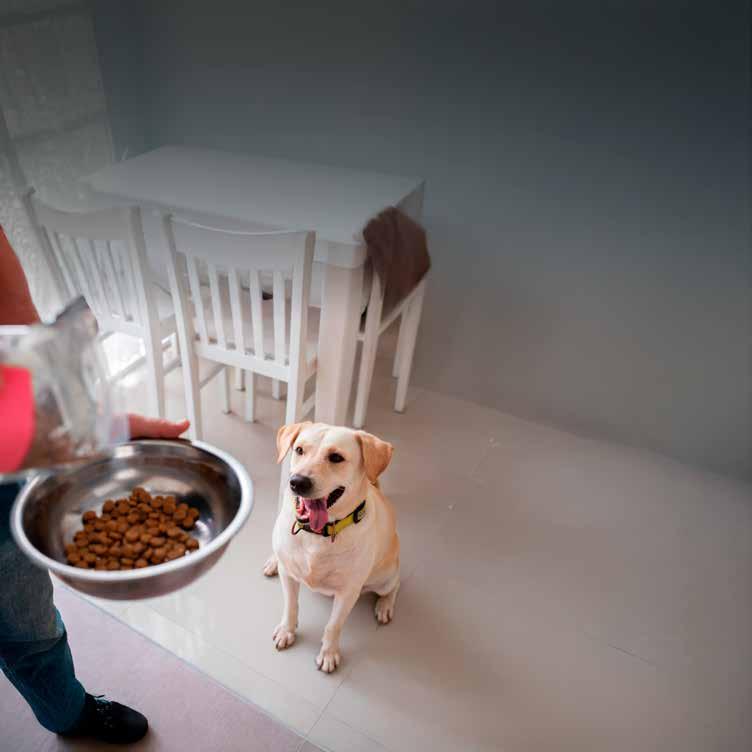
3. Wet line before canning/packing: In wet pet food production, magnetic separators play a vital role in the canning stage. Proper consideration of flow rate, particle size, and viscosity ensures effective contaminant removal, protecting expensive equipment like twin-screw pumps while safeguarding the final product before packing and metal detection.
4. Dry ingredients processing: Magnet placement during dry ingredient processing depends on factors like flow rate and protection level. Installing separators before extrusion prevents contaminants from being embedded in kibble, streamlining quality control measures and reducing potential hits on final-stage magnets.
5. Dry line before bagging: The final magnet before bagging serves as the last defense against contaminants before products reach consumers. Certified and traceable magnets provide reliable quality assurance and help demonstrate effective preventive measures.
Choosing a magnetic separator for these applications will depend on the flow rate, density, speed, and more.
Robust food safety protocols are fundamental to ensuring
nutr itious and safe pet food while maintaining consumer trust. Product recalls are financially costly and damaging to brand reputation, making comprehensive quality control measures essential.
A single recall incident can impose a significant burden on a production plant, both in terms of product losses and the possible impact on the company’s image, not to mention huge potential financial losses. It is critical for manufacturers to realize this risk and have comprehensive quality control measures in place.
The Magnattack expertise and range of magnetic separators can bolster your safety measures and give you peace of mind.
The Mag-Ram® Self-Cleaning Separator is an advanced solution that is highly effective for processing raw materials such as grain, protein meal, and meat and bone meal, as well as for dry ingredient handling and final stages before bagging. Its automatic self-cleaning functionality ensures rapid and efficient removal of ferrous metal contaminants, delivering exceptional performance, minimizing downtime, and maximizing productivity. Additionally, its dedicated contaminant chutes and pneumatic cylinders offer precise individual control, making it simpler than ever to maintain the integrity and purity of pet food products.
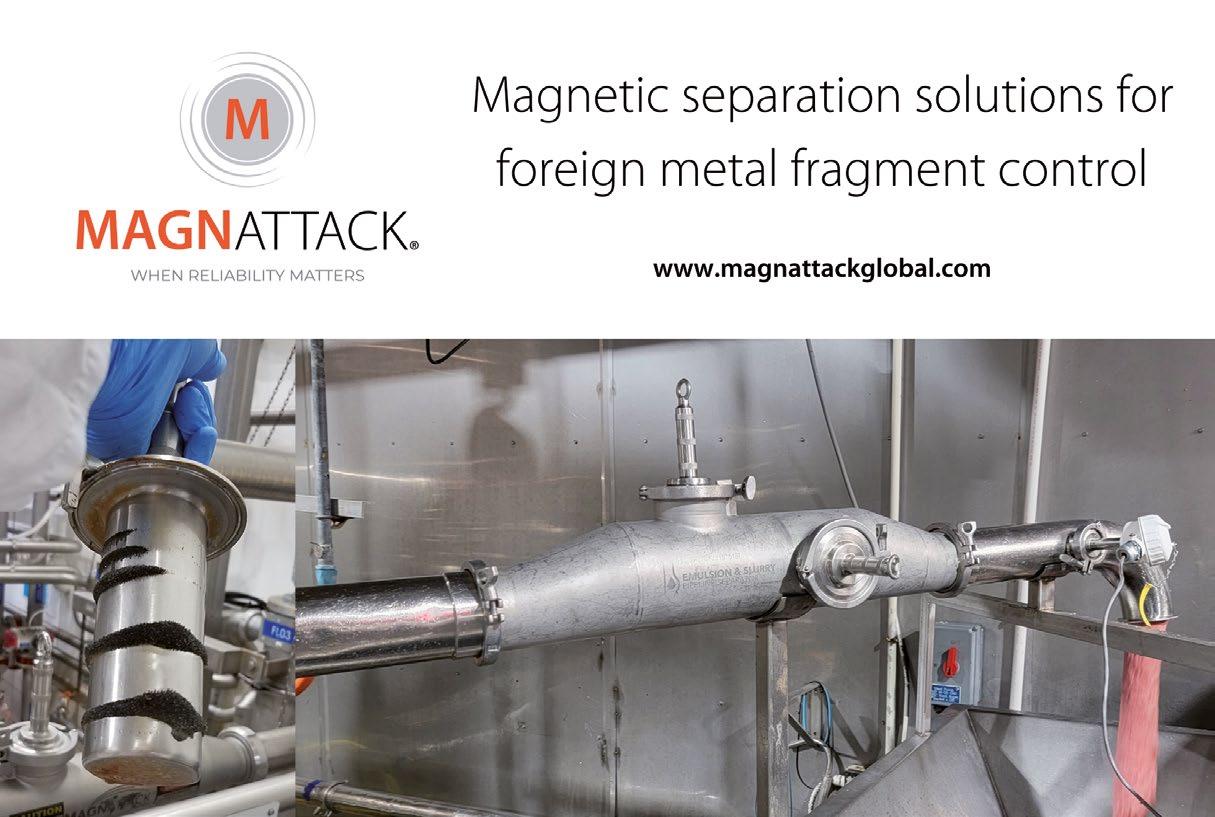



















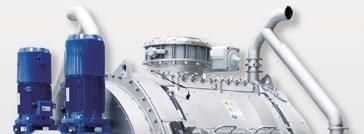

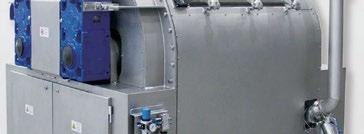





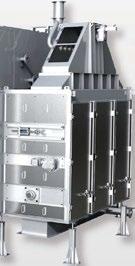






In this All Pet Food Magazine section we highlight the latest innovations to optimize pet food production.
Let’s take a look at the solutions proposed by different supplier and market leader companies.
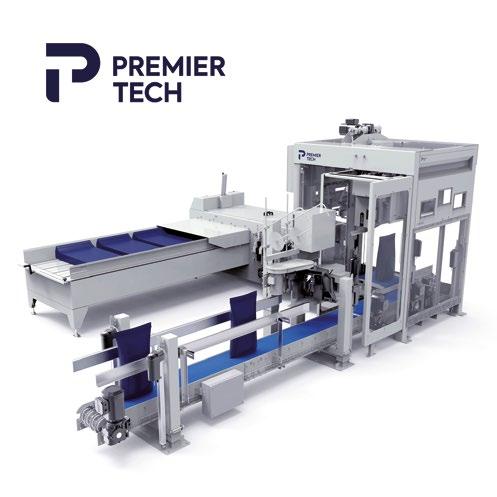
Precision and efficiency for your production line!
The CHRONOS OML-1140 is the ideal solution for those seeking speed, precision, and versatility in open-mouth bagging.
Designed to fill 5 to 50 kg bags with any freeflowing or powder product, it ensures superior performance and maximum efficiency.
High productivity: up to 25 bags per minute.
Proven reliability: more than 120 machines installed in 17 countries.
Total versatility: ideal for pet food, sugar, rice, starch, fertilizers, seeds, and plastic pellets.
Guaranteed efficiency: equipped with gross or net weighing systems, full bag control throughout the cycle, quick tool change, and protection for corrosive environments.
In addition, we offer a complete line for the Pet Food market , providing solutions for every stage of production.
Boost your productivity with Premier Tech’s reliability!
Contact us and discover the ideal solution for your business.
www.ptchronos.com
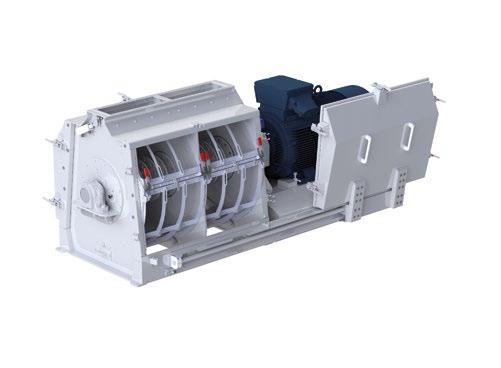
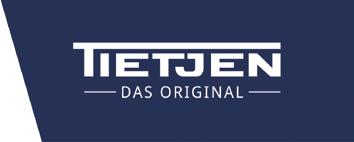
THINK BIG
FD 32 Pro Hammer Mill: New Development for the Fine Grinding of Pet Food and Fish Feed
The requirements for throughput rates and fineness in the grinding of pet food and fish feed for extrusion have increased significantly in recent years, while the recipes are becoming ever richer in fat and protein. With the FD 32 Pro hammer mill , Tietjen is presenting a completely new development that has been specially designed to meet these requirements.
The grinding chamber was extended to 1,600 mm and divided by a centre wall so that the screens, each 800 mm wide, are easy to handle. Four screens are installed per grinding chamber segment, resulting in a total screen area of 4.8 m² (7,440 in²). A special screen fastening seals the screens so that no oversize particles can get into the product.
www.tietjen-original.com/en

This issue of All Pet Food Magazine brings a conversation with Jorge Guzmán, Bühler’s Sales Director. He shares his views on the pet food industry, growing markets like Central America, how new technologies and artificial intelligence impact production processes, and Bühler’s position on sustainability and ecosystem preservation.
Jorge, could you tell us about your professional background and the focus of your current role as Sales Director at Bühler?
My journey at Bühler began in 2000, 25 years ago, as a Project Engineer. Ten years later, I took on the role of Sales Manager for several Bühler divisions after spending three years training at the company’s headquarters in Switzerland. Starting in 2010, I became Sales Director for the Animal and Human Nutrition Division for Mexico and Central America. I am a Mechanical Engineer with various training courses in processes at our headquarters in human and animal nutrition. I graduated from the SFT (Swiss Institute of Feed Technology), and I hold a degree in Business Management from IPADE and EGADE Monterrey.
Our main focus is to position ourselves as market leaders by offering the service and technological support customers expect to achieve their strategic plans, which are increasingly demanding and competitive.
What is the scope of Bühler technologies, and how do they optimize the lives and processes of those who use them?
As a global leader in technology development for the food and mobility industries, Bühler is present in the daily lives of millions of people, from the moment they wake up to when they go to bed, helping them meet their basic needs. Our technologies are present in their smartphones, solar panels, banknotes, lipsticks, the food they eat, and the vehicles they drive. We strive to innovate for a better world with a special focus on healthy, safe, and sustainable solutions.
How do your products and solutions contribute to the pet food industry?
The pet food industry is so fundamental that Bühler has integrated it under the Human Consumption Division. This ensures that, with our advanced technologies and automation, our customers obtain precise traceability and control of the entire extrusion process, both single and twin shafts. The result is a
reliable, high-nutritional-value, healthy, and easily digestible food for pets.
Do you currently have any pet food projects in development or soon to be launched you can share with us?
Bühler is a company that invests up to 5% of its turnover in new technologies each year, and the Pet Division is no exception. Some of these developments are already underway in projects such as:
Kibble humidity measurement and control at the dryer exit, as it is crucial because this is where you can make or lose money. That’s why Bühler launched our “DryingPro,” which helps measure and control humidity in real-time to increase drying process performance and profitability.
Kibble production ingredient mix accuracy and precision: This is optimized with various weighing equipment at different points in the process, from the extruder inlet to before packaging, thereby reducing waste within the process.
The particle size spectrum after milling, which is vitally important for achieving good mix homogeneity, as well as for the texture and cooking of the ingredients during the extrusion process. To achieve this, Bühler has a technology that controls this particle size, achieving improved kibble quality in every sense.
What are the distinguishing features of your Granulex model and its applications?
Our Granulex Series 5 hammer mill can provide energy savings capacity increases of up to 10% and time savings of up to 50% when changing hammers and screens. It also features an explosion-proof design to improve production safety.
The Granulex Series 5 mill is used by demanding industries that require grinding raw materials from very coarse to fine for feed or grains, such as the pet food industry, malt and beer, and general pre-milling.
And what can you tell us about the Imdher-Bühler alliance? How do you think it benefits the industry?
It is a strategic plan that has revolutionized the pet and feed industry, offering turnkey projects from a single supplier, primarily for Mexico. We have managed to integrate the experience of Imdher, a 100% Mexican company with more than 40 years in the market, with that of Bühler, with more than 170 years of creating cutting-edge technology for a better world.
Speaking of the market, how do you see the pet food industry in Mexico and Central America? At what stage do you think it is now?
Mexico, one of the largest markets in the world after the United States and Brazil, is gradually becoming saturated with a measured growth of approximately 4% annually, after growing at a rate of over 12% for the last 10 years. Differentiation will begin with high-quality products, as basic products will face intense competition, and a price war will start. This is where cutting-edge technology will play an important role in receiving byproducts from other industries and replacing some raw materials that will be expensive or difficult to obtain.
The rest of Central America is a smaller but rapidly growing market, which should be taken advantage of by local manufacturers or large Mexican producers who can export kibble while maintaining tariffs the Central American market faces on products from outside these countries.
In your view and experience, where is the pet food industry heading, technologically speaking? How do you think artificial intelligence is impacting it?
The pet food market is becoming more humanized due to the close relationship between pets and humans. Therefore, the way pet food is produced must be stricter and comply with certain regulations that, currently, are not applied or considered. Technology will play a very important role every day, together with raw materials, which are increasingly difficult to process. This is where twin-shaft extruders and more efficient packaging systems must be considered given their broad production flexibility.
AI is already present in production processes, healthcare, and disease prevention. Regarding food production, AI is becoming increasingly necessary through automation. It can fix process errors, allowing machines to adjust themselves to improve efficiency, performance, and traceability, and control human error, not to mention that manpower in Mexico and Central America is increasingly scarce. Today, we
must consider new production plans and the integration of our new generations so that they adapt to each market’s needs.
What place does sustainability have in the company’s vision? How do Bühler’s innovative solutions face climate change?
For Bühler, sustainability is essential for our regulatory framework, balancing humanity, nature, and the economy and involving our own company, suppliers, and customers. Regarding nature (the environment), we created a plan that began five years ago in which we committed to reducing waste, water, and energy use in our customers’ value chain by 50% by 2025. Additionally, we have developed a path to achieve a 60% reduction in greenhouse gas emissions across all our operations by 2030.
Thank you, Jorge, for sharing your knowledge and Bühler updates with the All Pet Food community!
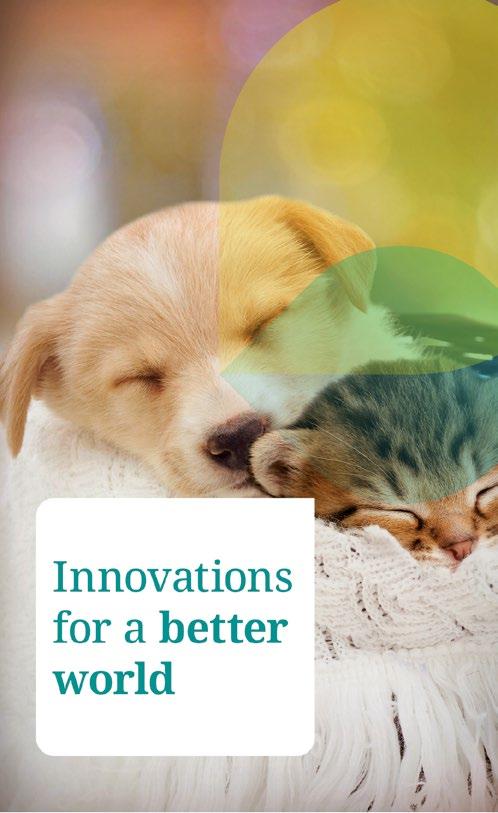
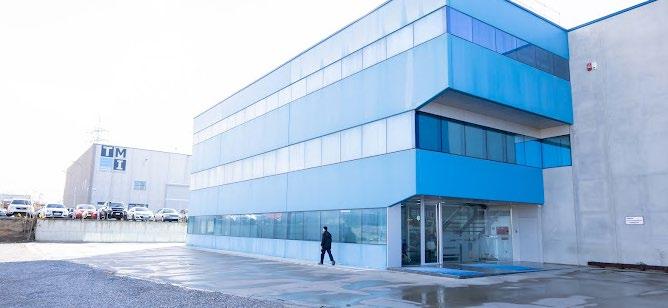

https://www.tmipal.com/en
http://www.linkedin.com/company/tmibaggingpalletizing
TMI CELEBRATES ITS 25TH ANNIVERSARY CONSOLIDATING AS A MODEL IN END-OF-LINE SOLUTIONS FOR INDUSTRIAL PACKAGING WORLDWIDE
The Catalan company TMI Bagging and Palletizing, specialized in bagging, palletizing, and stretchwrapping solutions, celebrates 25 years of trajectory with a strong and international presence, teams in more than 50 countries, and a clear bid for technological innovation.
Founded in 2000 in Lleida, a region with a strong agricultural and industrial culture, TMI was created to offer end-of-line solutions to the agri-food sector. Its founders, two technicians with decades of experience, detected the need to provide bagging machines for industrial products in flexible packaging focused on the quality of technical assistance and each project’s flexibility.
The first developments were implemented in local companies, especially in the animal nutrition, meals, fertilizers, and seeds segments, in which closeness and trust were important. While solutions were established, TMI widened its productive reach at the national level, but then abroad.
In 2008, the company started exporting, and since then it has been growing steadily. Today, TMI has different commercial models:
Direct sales channels in markets such as Spain and Portugal.
Distribution throughout of Europe, Oceania, North America, South Africa, and the Middle East.
A subsidiary in Mexico that manages LATAM.
Nowadays, it has teams in more than 50 countries, offering close, proactive technical assistance, the most valuable aspect of its clients.
TMI developed complete end-of-line solutions by integrating bagging, palletizing, and stretch-wrapping solutions with the latest innovations in industrial automation. Its goal is to provide clients with strong, efficient solutions and high-security standards.
The company firmly trusts in specialized assistance for each sector from engineering to the post-sales service, ensuring that the client not only receives a machine but also a complete and long-lasting solution. This approach allows them to optimize equipment and help clients foresee their needs, reduce downtime, and gain operative efficiency.
TMI has demonstrated great adaptability in the pet food sector, an industry rapidly evolving in terms of formats, consumption preferences, and regulations. In this way, the company designs very versatile equipment, which adapts to different products and sizes.
For All Pet Food, industry events create bridges for sector training and networking. Getting to know each other is an opportunity to connect and exchange knowledge, news, and trends.



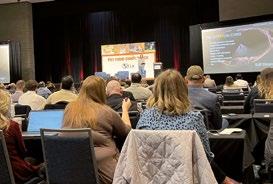



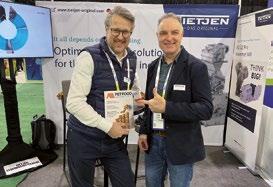



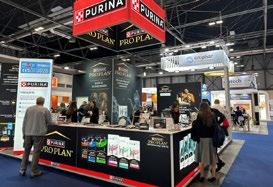
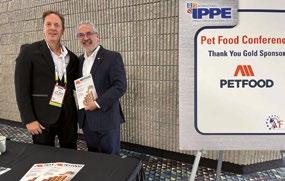


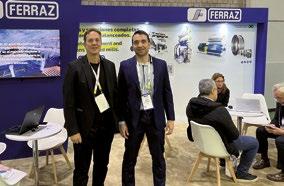
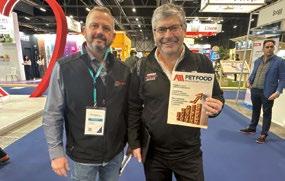
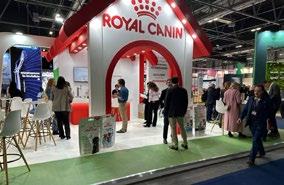
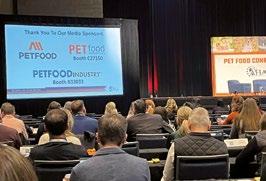

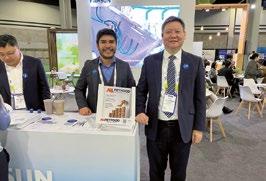


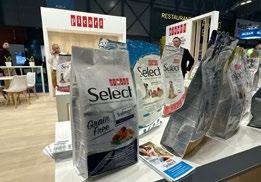
Here, we treasure some fragments of moments we have shared with the entire industry community. Relive the experience with us!


V CONGRESO NACIONAL SOBRE PROTEÍNAS, SEBOS Y GRASAS DE ORIGEN ANIMAL
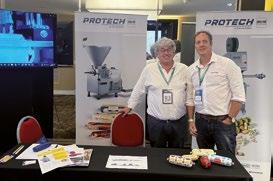
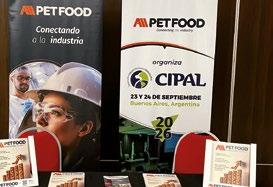


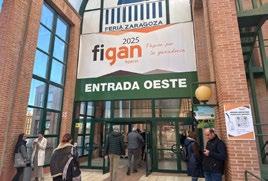








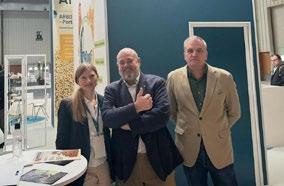

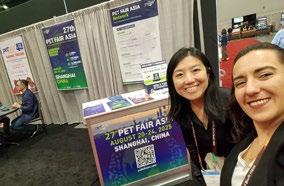
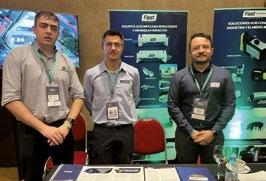
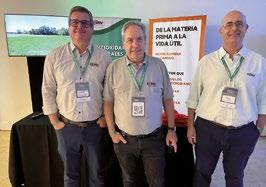
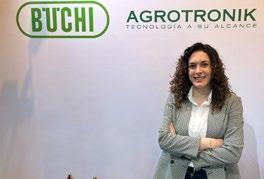
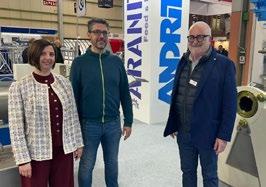
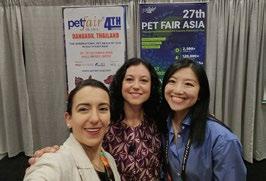
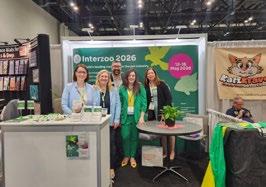













































































In each All Pet Food Magazine issue, we share recognized products and new launches from prominent worldwide pet food manufacturing companies. We present innovative formulations with high-quality raw materials, in line with market trends, obtained through technological production processes, and providing benefits to both pet health and nutrition.

Croquetas Vitacan / Línea Extra: Reliable Nutrition for a Healthy Life
Made in

With more than 45 years of experience in animal nutrition, Vitacan presents Línea Extra –an enriched formulation developed to meet dogs’ nutritional needs of any breed and in all life stages.
This line, made with high-quality natural ingredients, stands out because it includes Omega-3, DHA, antioxidants, and about 20 vitamins and essential minerals that provide healthy digestibility, enhance the immune system, and promote comprehensive development.
It is produced at Centro de Operaciones Previtep, the first center in Latin America to receive an FSSC 22000 certificate for extruded dry pet food, which endorses our commitment to kibble quality and security.
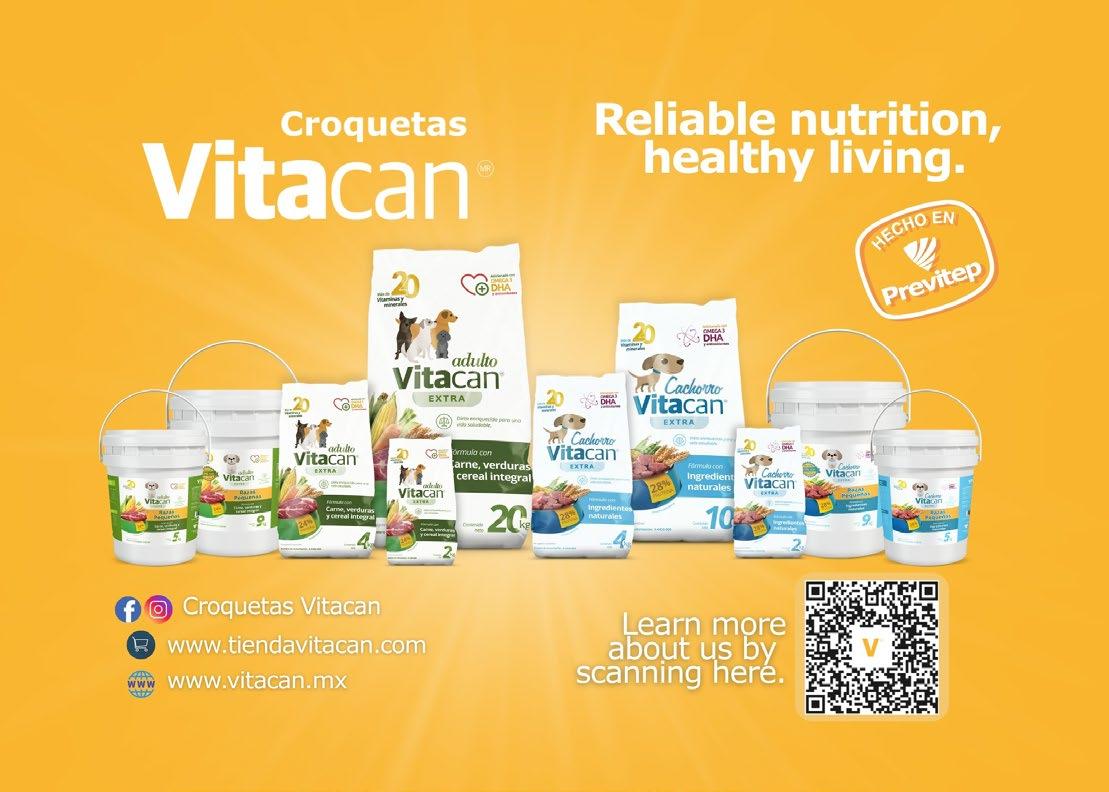

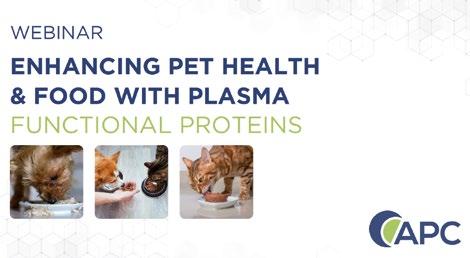
This April APC hosted a webinar, Enhancing Pet Health & Food with Plasma Functional Proteins, to hold a talk on the innovative use of plasma functional proteins to improve pet food formulations.
https://bit.ly/44qaVuF

Symrise AG has signed a strategic partnership with HBC, a Norwegian manufacturer of salmon-based ingredients addressing the human health and pet nutrition markets. This way, Symrise will expand its presence in the health category with clinically proven marine ingredients
https://bit.ly/4jvDn2v

After more than a decade, Nestlé is moving to establish its own pet care business in South Korea, ending its collaboration with Lotte Wellfood. The business rights held by the joint venture (JV) were transferred back to Nestlé Korea.
https://bit.ly/3YvU0Da
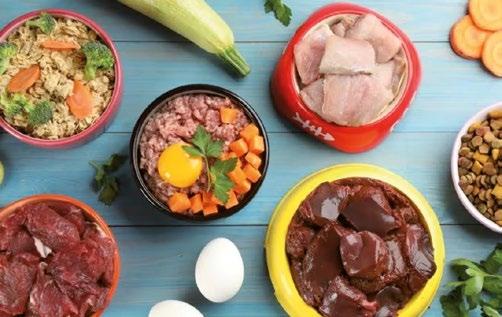
Colgate-Palmolive has agreed to acquire Australia-based Care TopCo, which owns the Prime100 fresh pet-food brand, “a high-growth, profitable, fresh dog-food asset.”
https://bit.ly/4cBQ5e7
Automation
NorthWind Technical Services LLC
+1 7 852 840 080 kastorga@northwindts.com northwindts.com
KSE
+31 6 11820906 info@kse nl ksegroup.com/es
Consultancy

Clivio Solutions
+ 54 9 2352 449007 info@cliviosolutions.com cliviosolutions com
Market Consulting
Triple Three International +521 (552) 187 4357 ifranco@triplethreeinternational.com triplethreeinternational.com
Packaging Equipment
Statec Binder +43 3112 38580 0 sales@statec-binder.com statec-binder com
Payper +34 973216040 contact@payper.com payper.com
Premier Tech
+ 55 11 4525 1151 (Brasil) +52 81 8008 1050 (México) reie2@premiertech com ptchronos.com

EZMA
+34 6 1664 1435 sarmendariz@ezma.com www.ezma.com
Nutrition / Additives

Kemin
Tel.: +55 19 3881-5700 guilherme.fray@kemin.com kemin.com
JRS



Nutrition / Immunity
Biorigin
+55 14 3269 9200 biorigin@biorigin.net www.biorigin.net
Nutrition / Ingredients
APC
+55 19 971492710 luciana tognetti@apcproteins.com apcpet.com/la

Lallemand Animal Nutrition +39 320 7140950 pet@lallemand com lalprobiome.lallemandanimalnutrition.com
GRUPO HARMONY
+54 9 11 2796 5874 nicolas.castelli@grupoharmony.com http://www.grupoharmony.com/
Nutrition/Palatants

AFB International +54 11 4 894 8570
Callizo Aromas +57 305 814 9448 info@callizoaromas.com callizoaromas.com

Kemin Tel : +55 19 3881-5700 guilherme fray@kemin.com kemin.com
Symrise Pet Food +55 19 99751 3565 pedro bermudes@symrise.com symrise.com
Nutrition/ Gut health
Biorigin +55 14 3269 9200 biorigin@biorigin.net biorigin.net
Nutrition/Supplements

Tel.: +49 7967 152 663 sandra.kupfer@jrs.de jrspetfood.com
3A BIOTECH SL
+34 968 839 004 info@tres-a.net tres-a.com
CELTA BRASIL
+ 55 11 4615 7788 marketing@celtabrasil.com.br www.celtabrasil.com.br
Setop Group +56 9 5406 9955 sales@cosal.com setop com
Weighing and Dosing
PLP Systems SRL +39 0523 891629 info@plp-systems.com plp-systems.com
KSE +31 6 11820906 info@kse.nl ksegroup.com/es
Processing/Machinery
Buhler Group + 52 722 262 05 12 info@buhlergroup.com buhlergroup.com



CPM +54 9 11 5389 5312 idah@cpm.net onecpm com
Extru-Tech +1 785 284 2153 extru-techinc@extru-techinc com extru-techinc.com
Famsun +86 514 80689999 contact@famsun com https://en.famsun.com
Ferraz +55 16 3934 1055 vendas@ferrazmaquinas.com.br ferrazmaquinas.com.br
Industrias Bartoli Hnos +54 0343 486 2707 info@bartolihnos.com.ar bartolihnos com ar

Tietjen Verfahrenstechnik GmbH
+49 4106 63 330
info@tietjen-verfahrenstechnik.com tietjen-original.com/en/
Wenger Manufacturing
Reading Bakery Systems +55-19 3881 5060 wengerbr@wenger com wenger.com

+57 3166728560 info@readingbakery.com www.readingbakery.es
TMI +34 973 25 70 98 info@tmipal.com http://www.tmipal.com/
ANDRITZ
+52 443 323 1530 andritz-fb.mx@andritz.com http://www.andritz.com/ft

North American Renderers Association
+52 55 59806080 gdavalos@nralatinamerica.org nara org

Magnattack® Global
+54 9 291 425 2201 magnets@magnattackglobal.com magnattackglobal.com
All Pet Food Magazine publishes content of high academic interest created by editors, who bring prestige to each issue and valuable knowledge to the entire pet food industry. In this section, we are pleased to share the professional profiles of our guest editors, their country of residence, and their main phrase.

“Feed with love, care with science “


“Clarity for the industry”













































































